It was back then as an 9 year old kid, I saw the view of Kashmir for the first time when I watched the song of “ Yeh chand sa Roshan Chehra”. It was a Sunday morning in 2005 and “Rangoli” program was aired on Doordarshan channel. Before internet era, it was like holy compulsory ritual on Sunday mornings, bringing the charm of Bollywood’s golden melodies to millions of viewers.
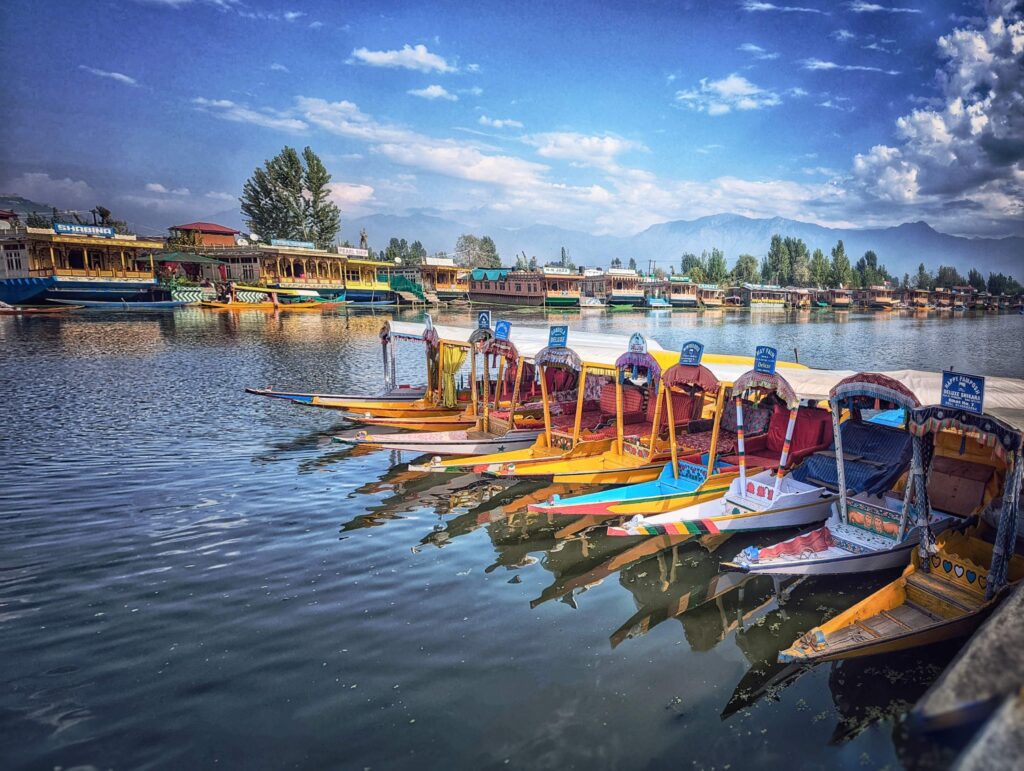
The song “Tarif Karoon Kya Uski” not only celebrates the beauty of the heroine but also showcases the picturesque landscapes of Dal lake making it as much a tribute to the region.
The song was shot in the legendary Dal lake & visuals showcase the region’s unparalleled beauty, serving as a metaphor for the heroine’s loveliness.
As a nine year old kid, I immediately made up my mind to sit in a beautiful Shikara.
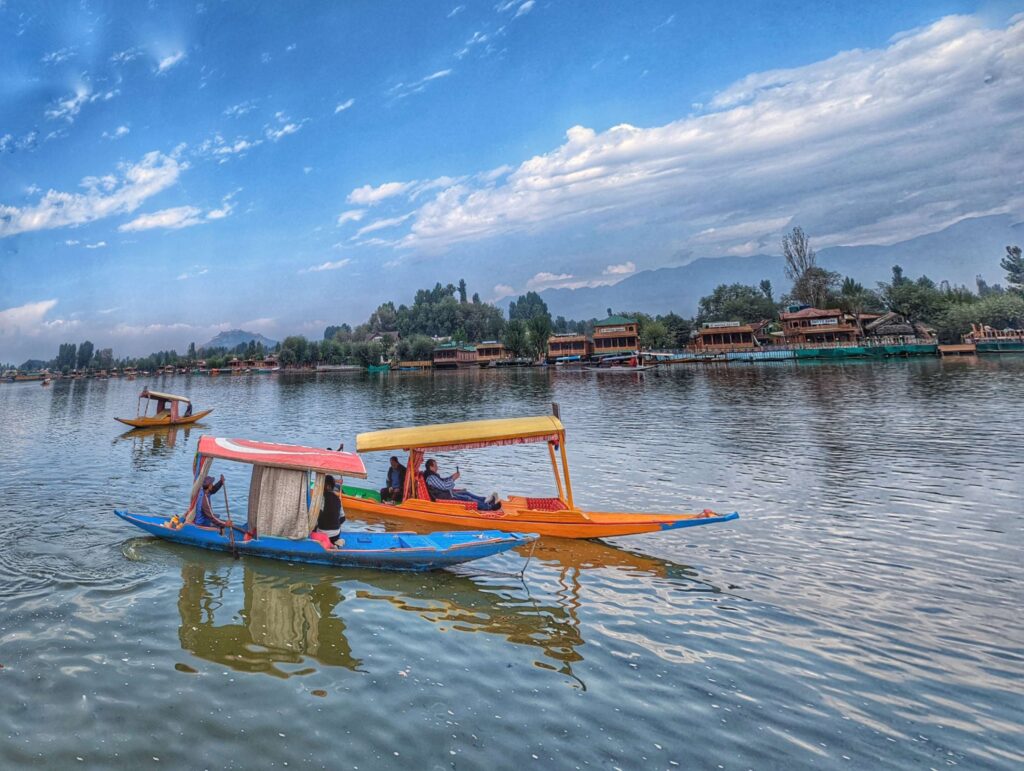
When I grew up, Kashmir was always in the media for all negative reasons. People feared going there. Most of the Travel advisories instructed to avoid travel here.
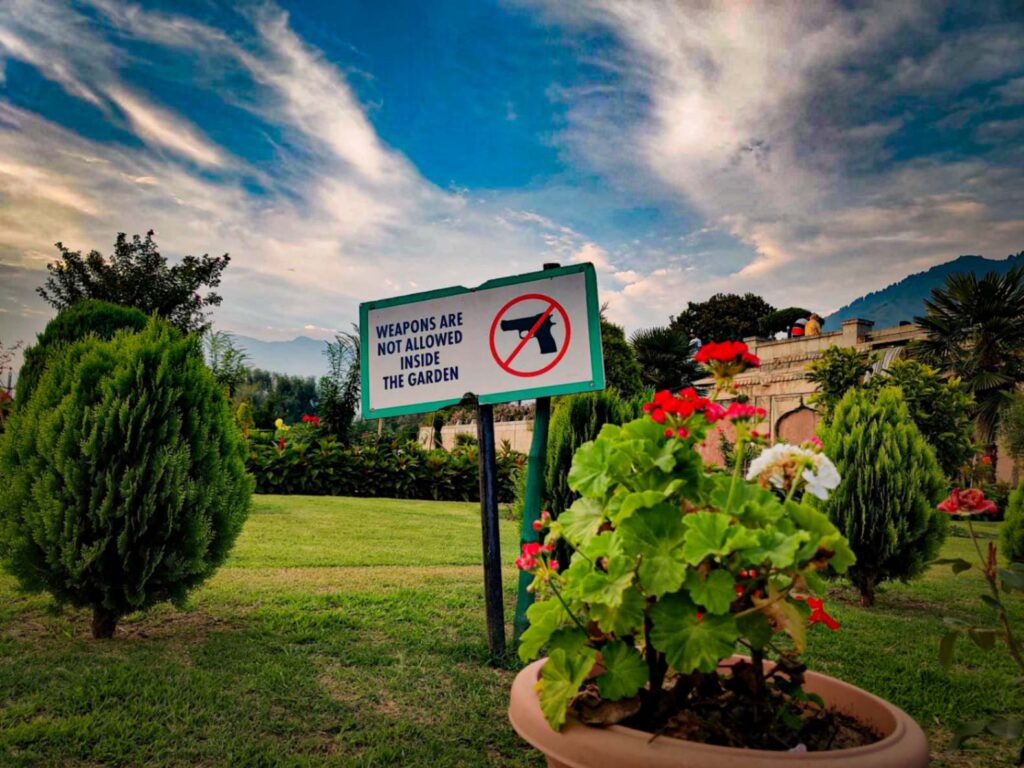
I had travelled to remote places in Uttarakhand & Himachal Pradesh. But I was scared to venture into this Paradise . But deep into my heart, I always wanted to go to Kashmir.
Deep thoughts are powerful. When the heart and mind align on a single thought, the destiny has no choice but to answer.
It was August 2022 & August month has most Gazetted holidays in Indian Callender due to Rakshabandhan & Independence day. I was getting nine day of holiday by using only three casual leaves. I had booked train tickets to hometown in advance.
But the destiny had different plan & probably the best plan. My company published a circular of fully sponsered trek to ” Kashmir Great Lakes “. I was afraid of travelling to Kashmir but when my company had organized it, I trusted it blindly.
I applied & prayed for luck & finally I had got an opportunity to visit this unearthly place. I called my family to inform them that I was going to KGL Trek and that I had cancelled the tickets to hometown during Rakshabandhan & Independence day week. My family was terrified with the thought of going to visit remotest parts of Valley & that too when my marriage date was two months away.
As a nine year old kid, I just wanted to sit in Shikara in Dal lake, but here the destiny took me to the remote places where literally heaven met earth.
Finally I boarded flight from Delhi to Srinagar. I had got a window seat. The first view of Srinagar in monsoon was absolutely stunning.
Once I landed on Srinagar Airport, I went into into the washroom of the airport. Ladies washroom was full of the girls coming from Delhi. All were busy in adjusting their makeup before leaving airport. On one corner of restroom, I found one lady sitting on a bench who managed with the cleaning of washroom. She had absolutely no makeup & I found her to be the most beautiful amongst all the ladies present in the restroom.
Welcome to the Paradise on the Earth !! Where everyone is beautiful!
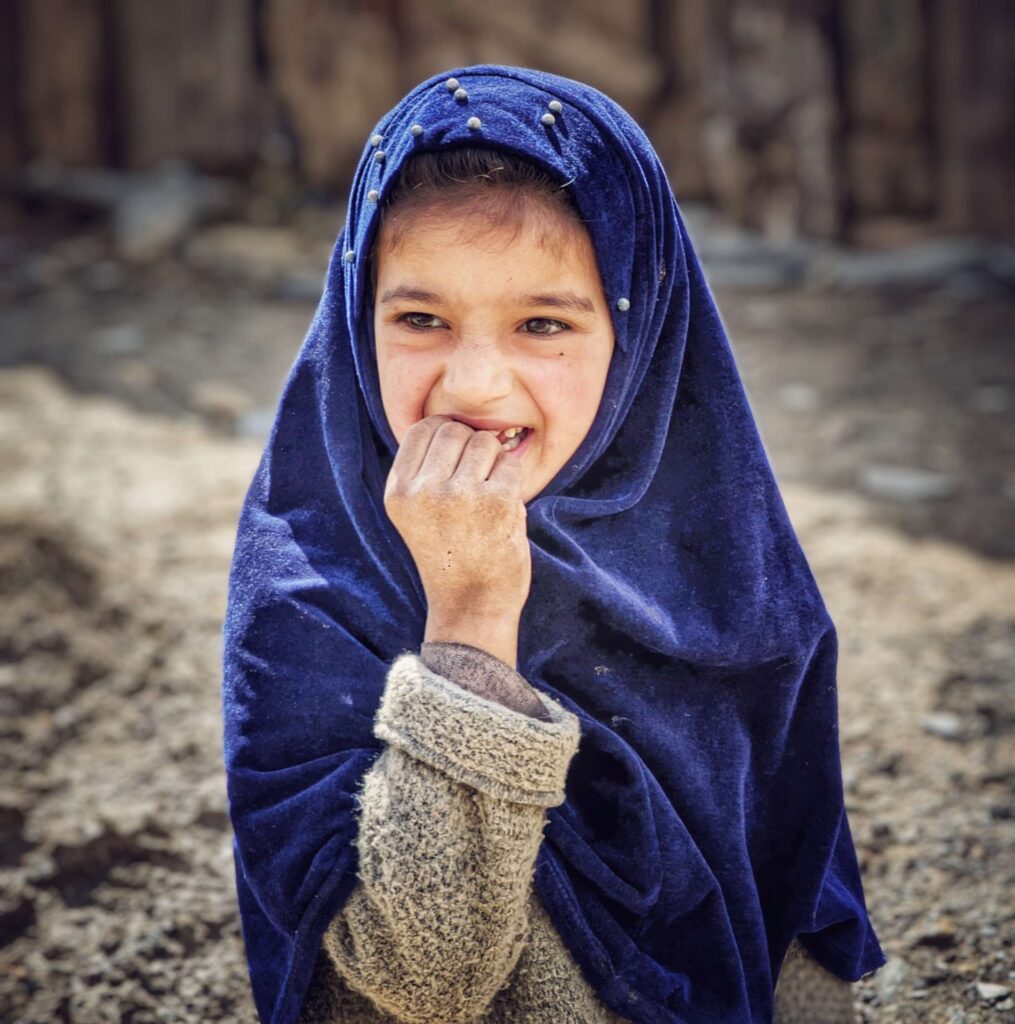
Wherever you go in Kashmir, everything is beautiful. Everything means literally Everything!
Table of Contents
What Makes Kashmir’s Beauty Truly Timeless?

Kashmir’s timeless beauty has been a source of inspiration for writers and poets across centuries. From Sanskrit epics and Persian couplets to Mughal memoirs and modern poetry, the region’s breathtaking landscapes and cultural richness have left an indelible mark on literature. The words of these writers continue to echo, reminding us why Kashmir is celebrated as one of the most beautiful and timeless places on Earth.
Kalhana’s Rajatarangini (12th Century): Kalhana, a Kashmiri historian, wrote the Rajatarangini, which chronicles the history of this region in Sanskrit . In his verses, he described this serene place as a land of unrivaled beauty, referring to its rivers, mountains, and gardens as divine creations. He famously wrote: “Kashmir is more beautiful than heaven and is the benefactor of supreme bliss and happiness.”
Nilamata Purana (6th Century): This ancient Sanskrit text describes the origin of Kashmir as a valley reclaimed from a massive lake, symbolizing its divine transformation into paradise. It celebrates the region’s fertile lands, serene waters, and sacred mountains.
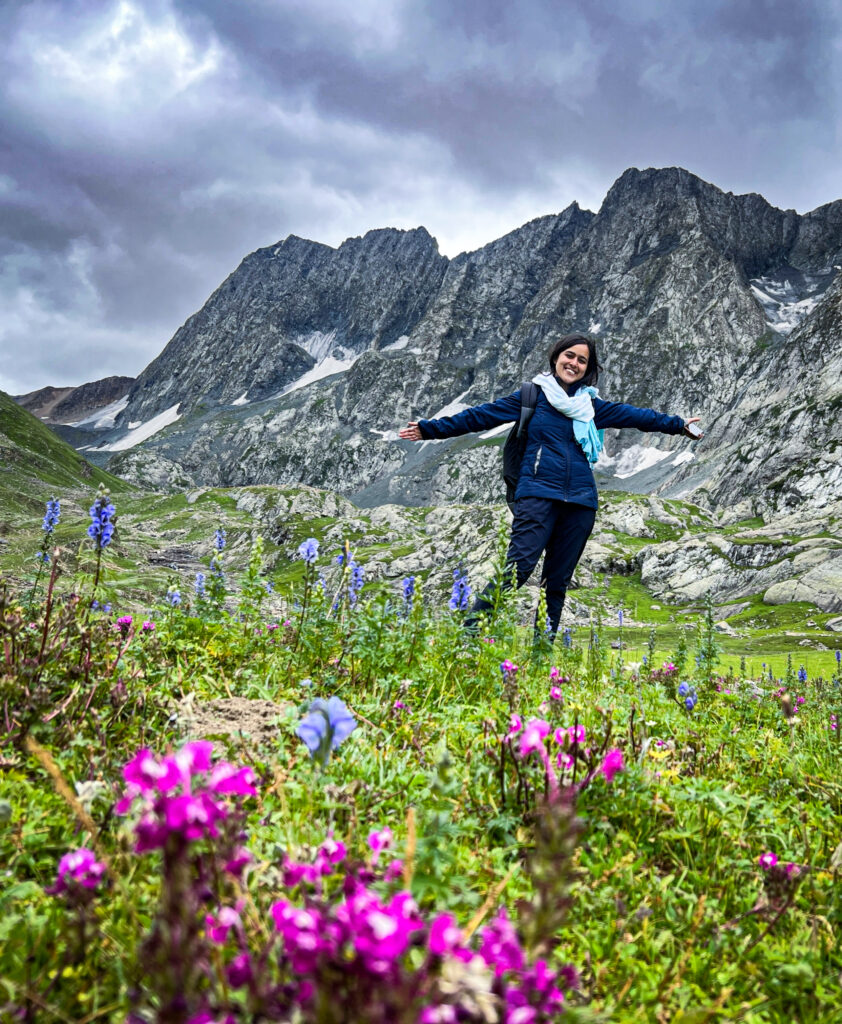
Amir Khusro ( 13th Century)
Once you travel here, you can easily understand why even the legendary Sufi poet Amir Khusro from the 13th century, fell in love with this place & eloquently described it as “Paradise on Earth”.
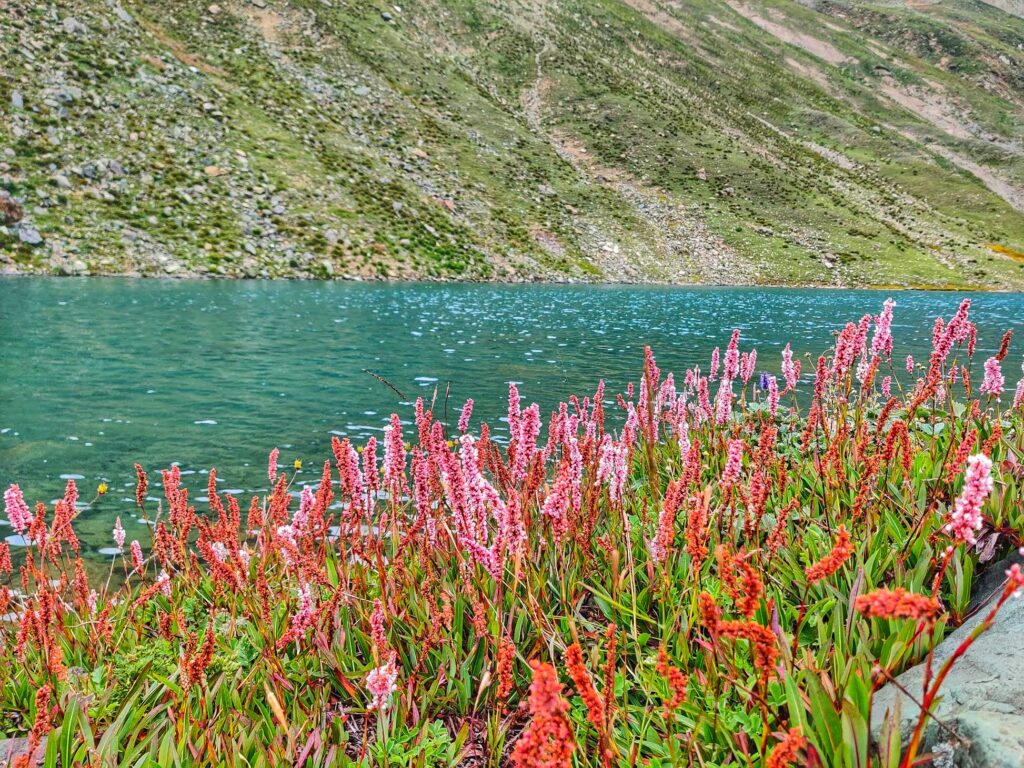
Khusro’s words are:
“Gar Firdaus Bar Roo-e-Zameen Ast, Hami Asto, Hami Asto, Hami Ast.”
Translated into English, it means:
“If there is a paradise on earth, it is this, it is this, it is this.”
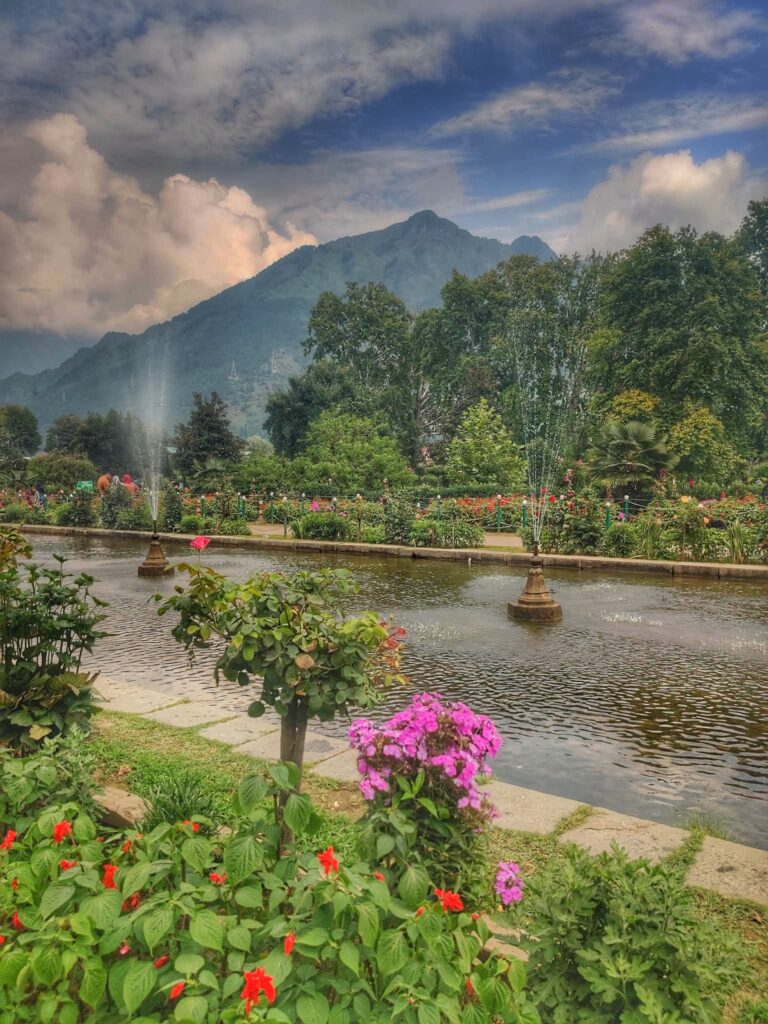
Once you see the iconic gardens in Srinagar, built by the Mughals, it’s not difficult to understand that even the Mughal Emperors couldn’t escape from the beauty of this Paradise.
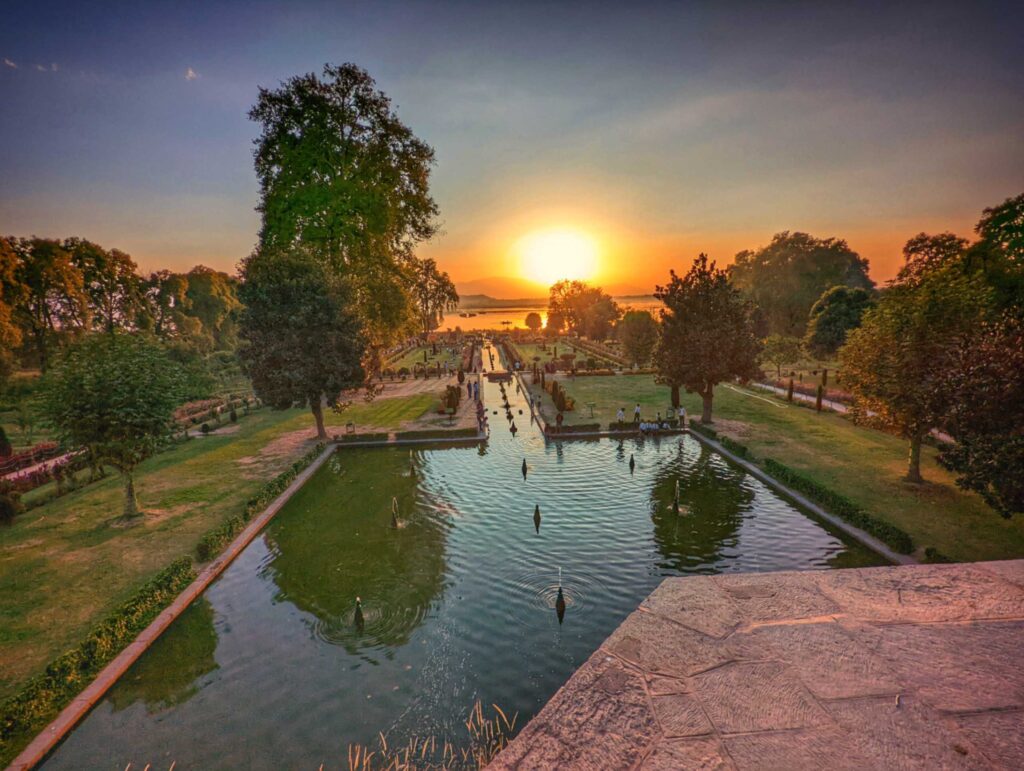
Francis Younghusband (19th Century):
A British explorer, Younghusband wrote about this “unearthly beautiful place,” marveling at its valleys and crystal-clear lakes. His book, “Kashmir: A Wonderland of Asia,” introduced the region to Western readers. Western readers often call this place as ” Cashmere”.
Kashmiri Hospitality: A warm embrace
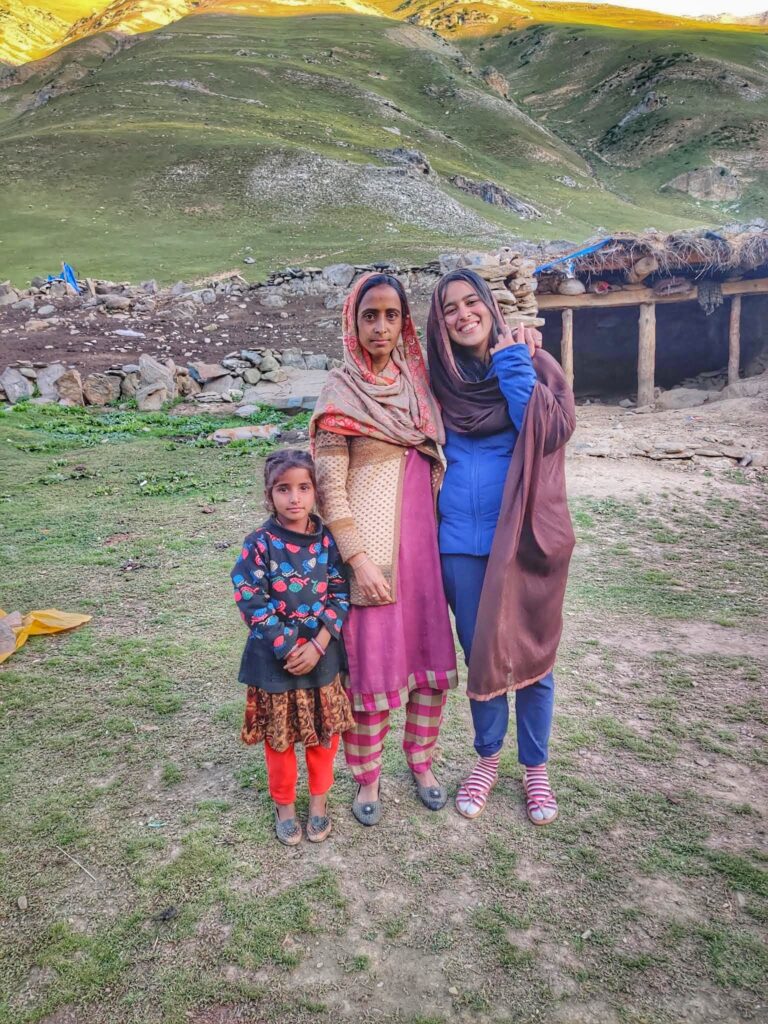
When people describe this region as “Paradise on Earth,” they’re not just talking about its breathtaking landscapes but also the warmth and hospitality of its people. Hospitality here is not just a practice; it’s a way of life that embodies generosity, warmth, and an innate ability to make every guest feel like family.
In the local culture, ‘Mehman Nawazi’ (hospitality) is held in the highest regard. Guests are treated with deep respect and care, embodying the belief that visitors are a blessing from the divine.
Whether it’s a stranger, a tourist, or a neighbor, local people go out of their way to make everyone feel welcomed and valued.

Homestay Hosts ensure that guests feel at home, offering freshly cooked meals, cozy accommodations, and engaging stories about the valley’s history.
In villages and towns, even strangers are invited into homes for a meal or a cup of tea, embodying the true essence of hospitality.
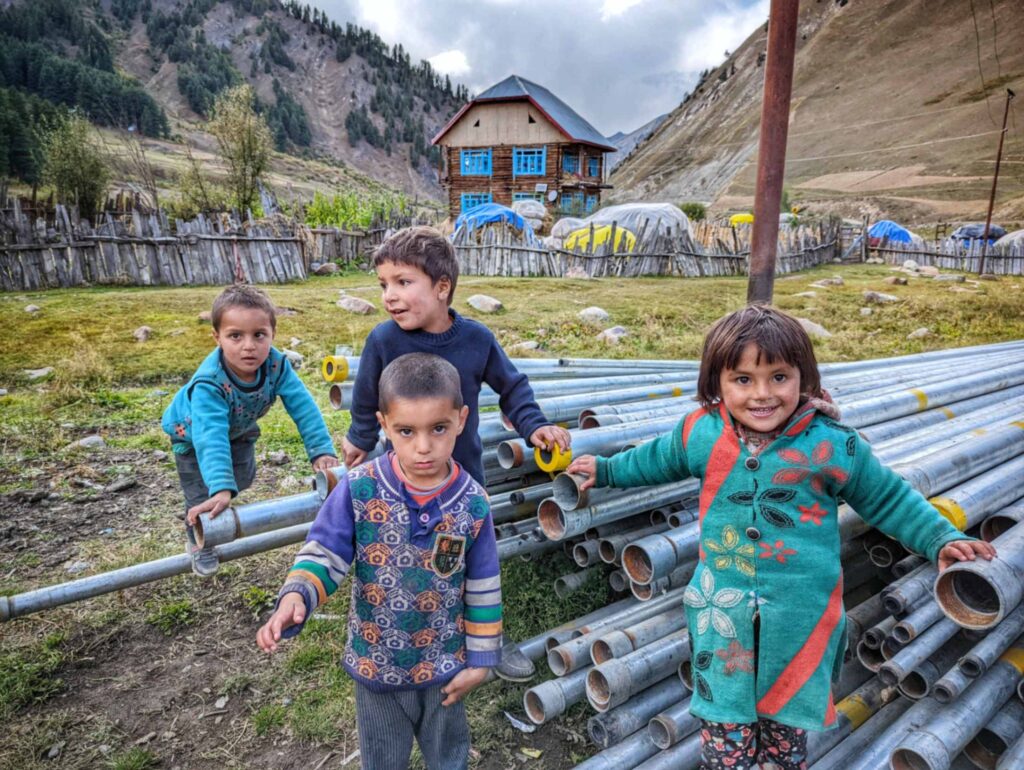
To visit here is not just to see paradise but to feel it, through the warm embrace of its people.
Kashmir: Canvas of Nature’s Masterpiece Literally painted by God.
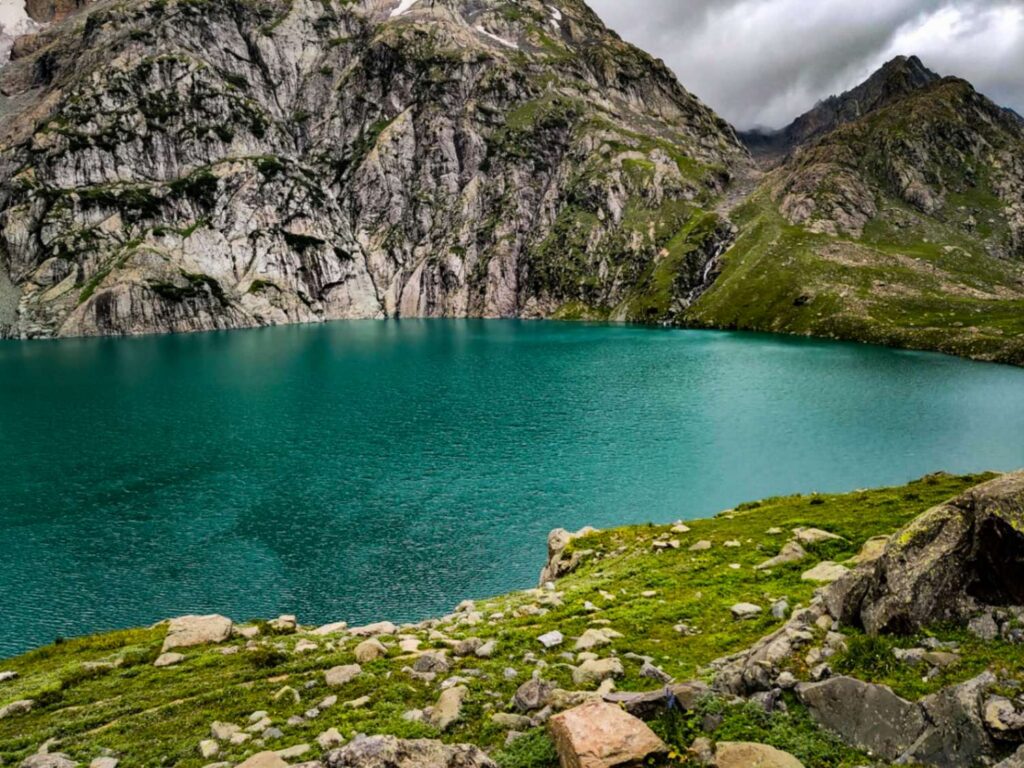
It’s a living, breathing masterpiece created by nature and painted with the divine brush of God.
From its snow-capped peaks to its pristine lakes, every inch of this paradise reflects the artistic brilliance of the Creator.
Kashmir is the ultimate master in the Space & Time dimensions. Visit any Space at any time and this place will just blow your mind with its beauty.
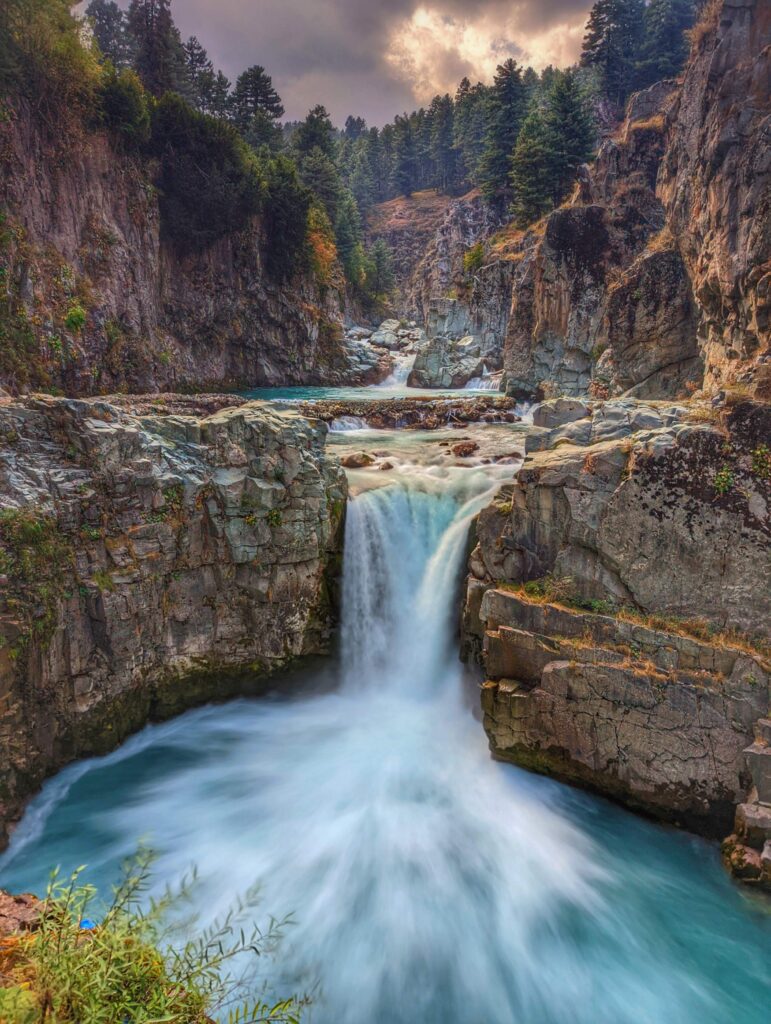
It has single element of Nature’s landscape. It has beautiful high altitude alpine lakes, crystal clear rivers, stunning meadows & towering mountains.
Each season here brings a unique color palette:
Spring fills the valleys with blooming flowers and vibrant greens.
Summer showcases lush meadows and blue skies.
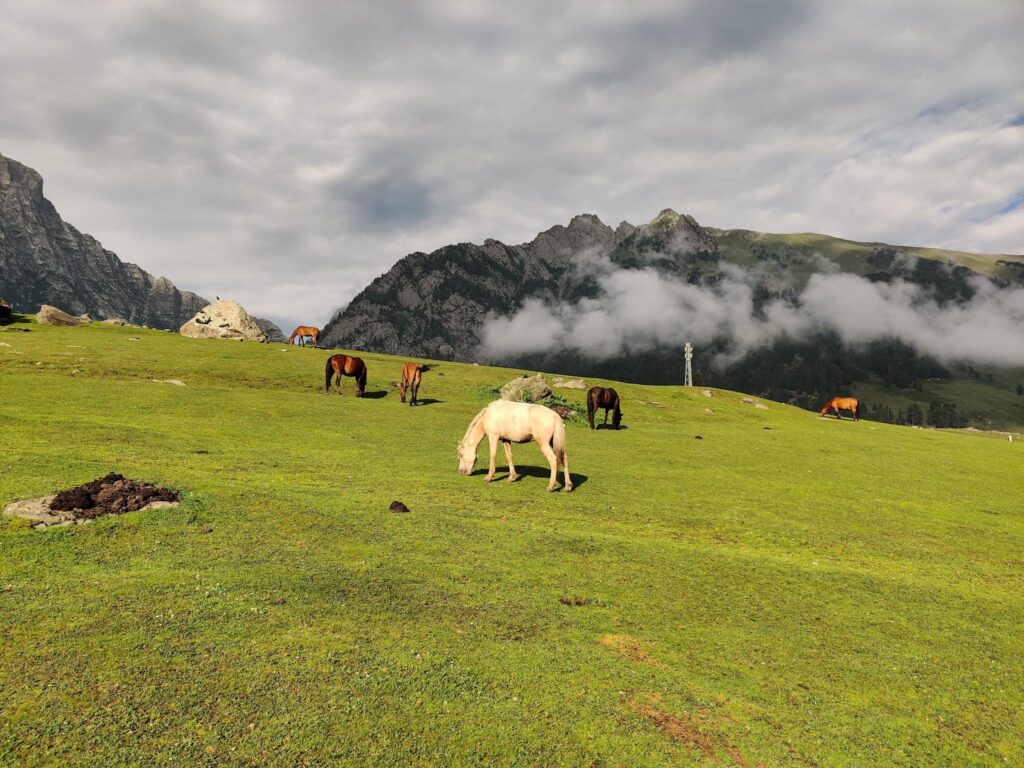
Rainy season shows the beautiful cloudy landscapes with lush greenery.
Autumn bathes the region in golden hues from the fiery Chinar trees.
Winter transforms this place into a white wonderland, resembling a celestial painting.
This place is absolutely a divine creation where every mountain, river, and flower seems to whisper the glory of its Creator. As you walk through this canvas of nature’s masterpiece, you realize that this heavenly place is an eternal reminder of God’s unparalleled artistry.
The Beauty of Flowers in Kashmir: A Floral Paradise
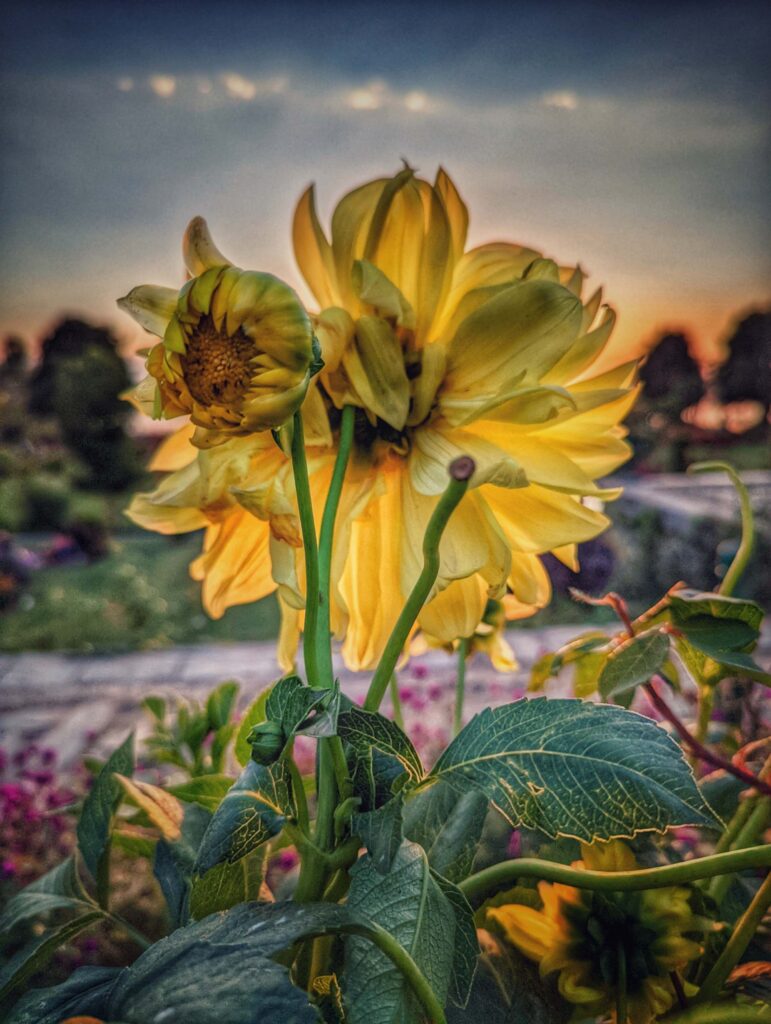
How can one be in Kashmir & not notice flowers?
This heavenly place owes much of its charm to the stunning beauty of its flowers.
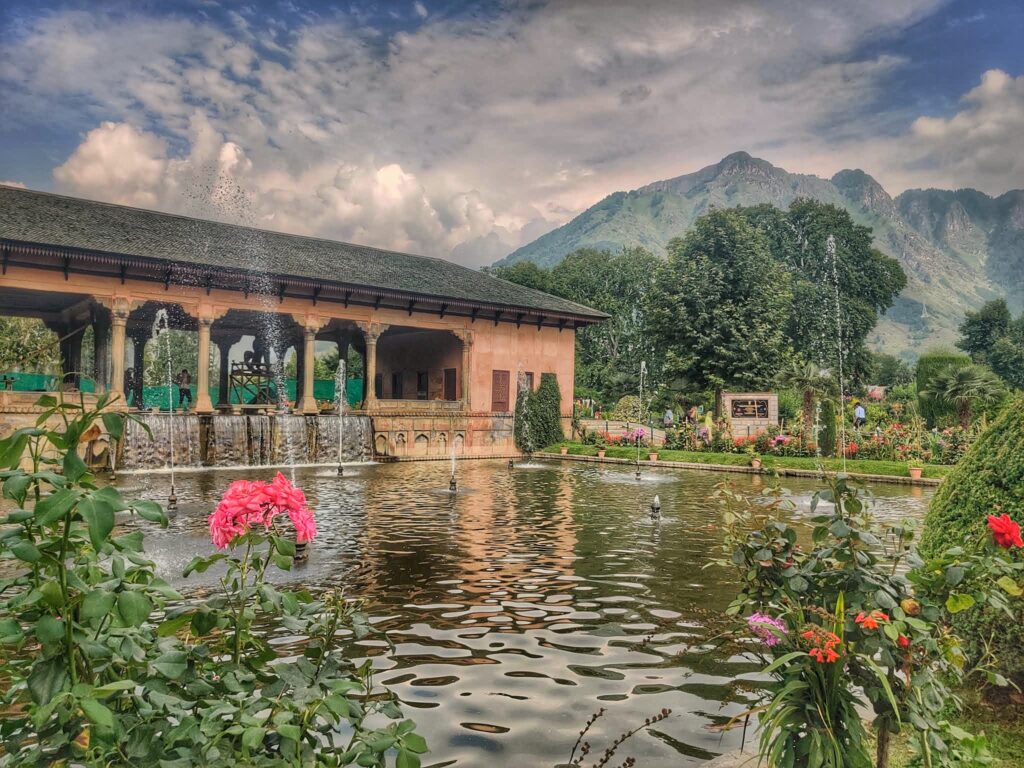
From the vibrant tulips that bloom in spring to the delicate saffron crocuses that enrich its fields, the valley is a living canvas of colors and fragrances. The flowers of Valley are not just natural wonders but also a reflection of its cultural heritage and spiritual serenity.
The legendary Mughal Gardens are a testament to the Mughal emperors’ love for flowers.
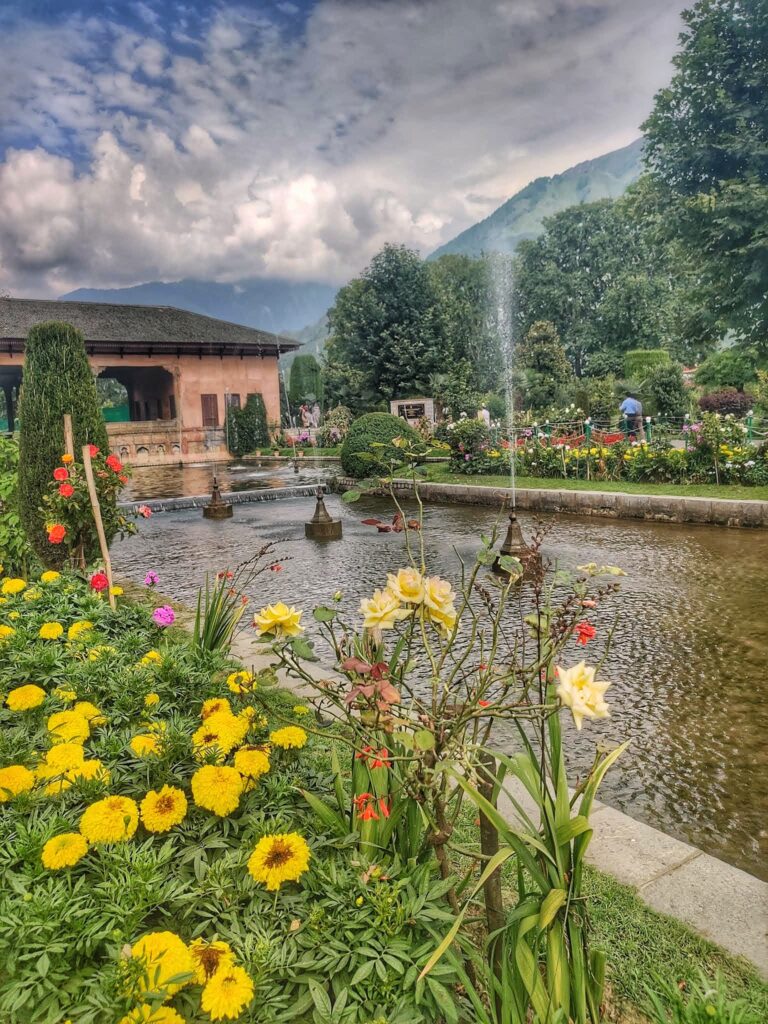
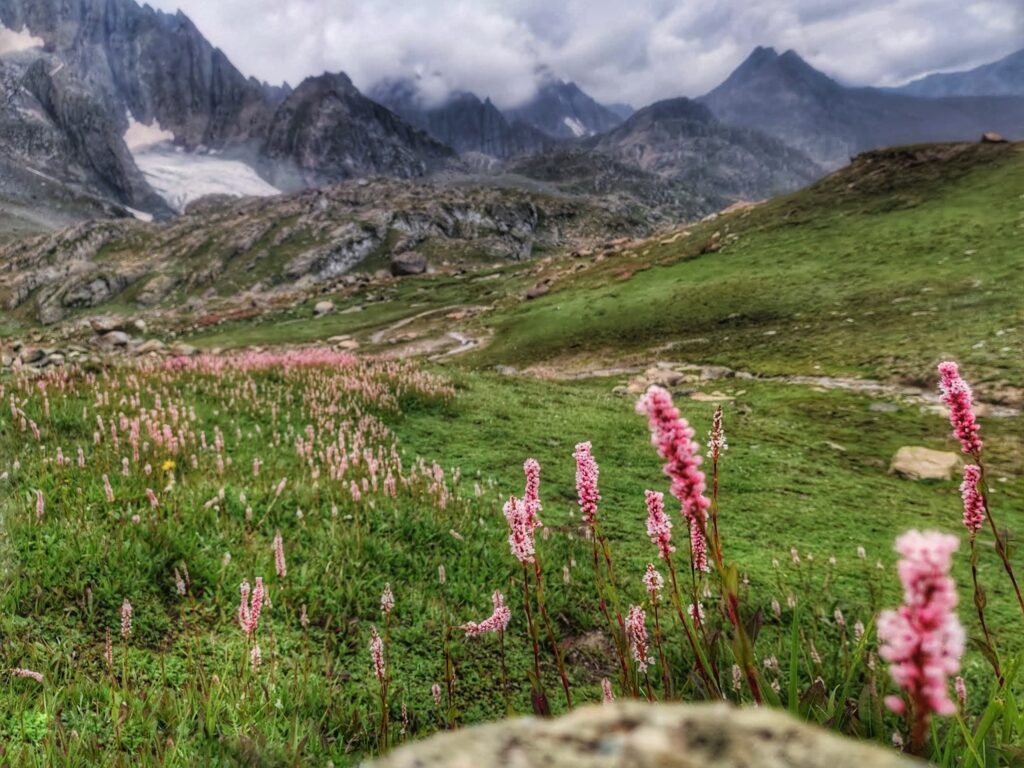
Beyond the regular flowers, this place is also famous for Himalayan wildflowers. The untouched beauty of valley is accentuated by wildflowers that bloom naturally in meadows and forests.These blooms are most vibrant in spring and summer, when the snow melts to reveal lush meadows dotted with flowers.

The lotus flowers that bloom in lakes, especially Dal Lake, hold great cultural and spiritual significance.The lotus represents purity and divine beauty in Indian culture.These delicate flowers bloom during the summer, adding a serene charm to the already picturesque waters.
The flowers elevate the valley to a divine state. From the vibrant tulips and fragrant saffron to the wildflowers of Its meadows, this place is truly nature’s floral paradise. Through its blossoms, Valley tells a timeless story of renewal, resilience, and the eternal beauty of life.
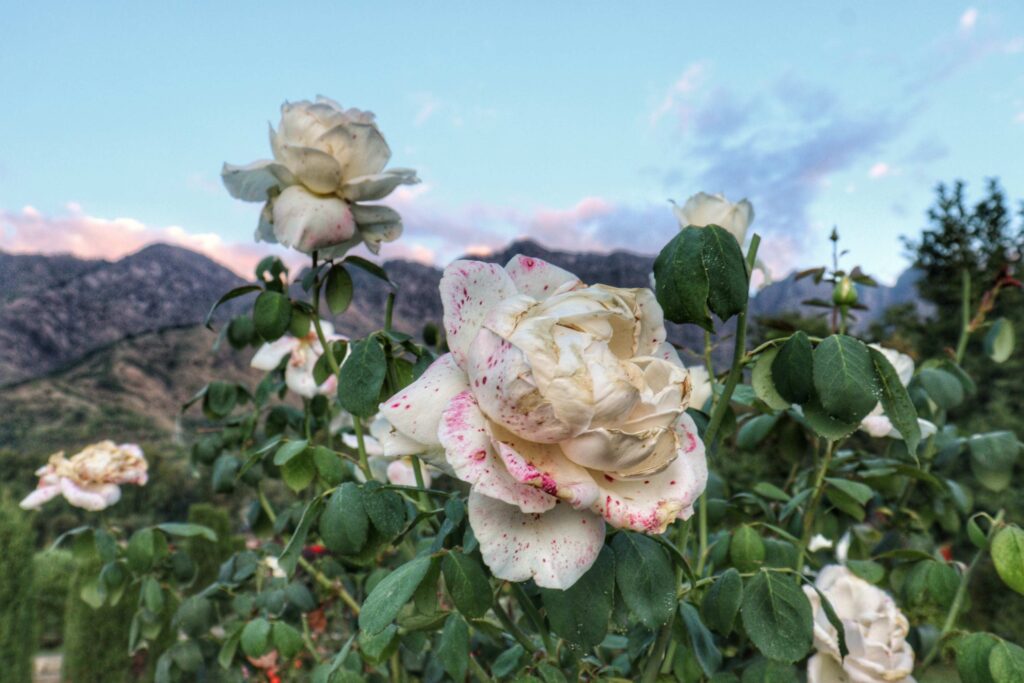
This heaven is known for its fragrant and vibrant roses, which are cultivated in gardens and used for making rose water and perfumes. Roses are the main hero of Mughal gardens, these rose beds attract visitors with their vivid colors and sweet aroma.
The arrival of spring here, is marked by the blossoming of almond trees.The Badamwari Garden in Srinagar is a spot to witness the almond blossoms.These pale pink and white flowers signal the end of winter and the beginning of a new season of growth and beauty.
Flowers are deeply woven into the fabric. Kashmiri embroidery & carpets items often feature intricate floral designs inspired by the valley’s natural beauty. If you roam fabric markets here, you won’t be able to find a single fabric item without a floral design.
The floral beauty symbolizes the region’s identity as a land of peace and harmony. The delicate yet resilient flowers reflect the strength and grace of its people, standing tall even amidst challenges.
Children of Kashmir: Innocence Amidst Beauty
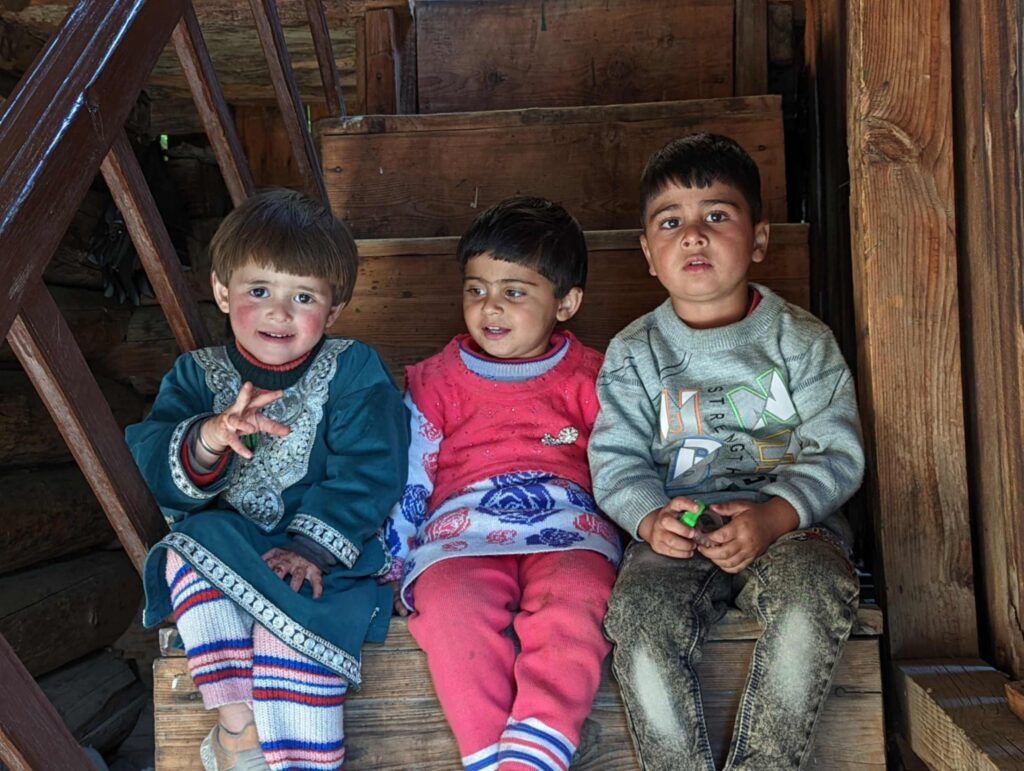
This place is known for its breathtaking landscapes but also for its resilient and vibrant people. Among them, the Kashmiri children stand out as symbols of hope, innocence, and a promising future. Their lives are shaped by the unique culture, traditions, and challenges of the valley, making their stories deeply inspiring and heartwarming.
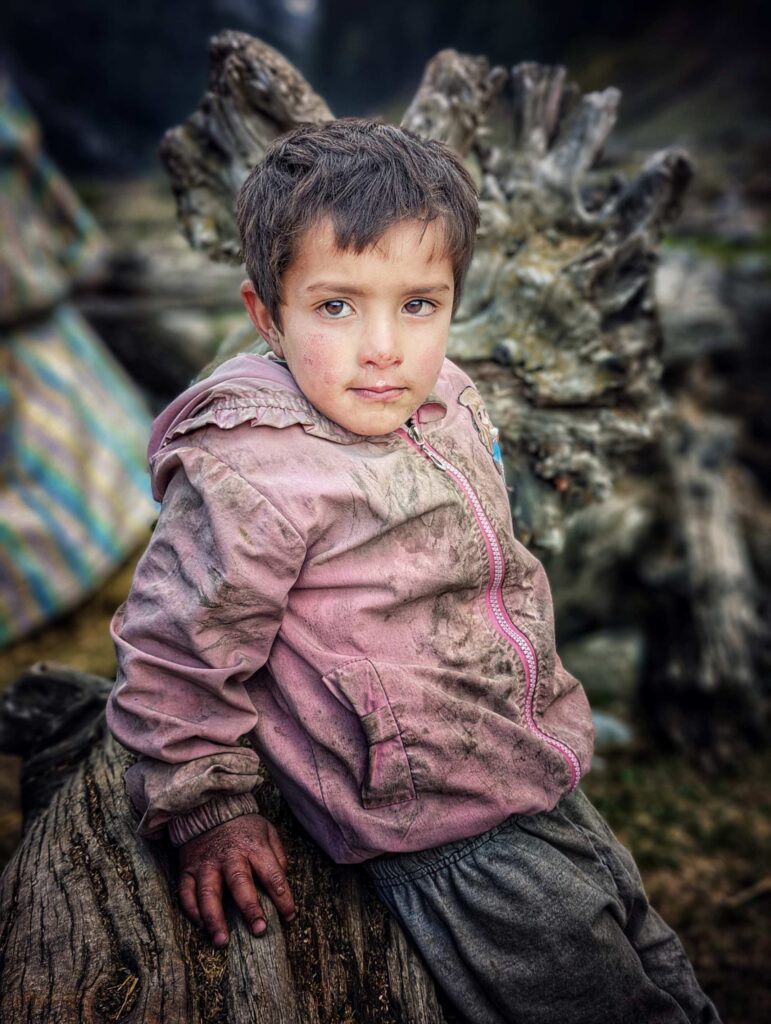
These children play in the stunning meadows. Simplicity and joy define their lives, as they make do with what they have, finding happiness in the smallest things.Their smiles and innocence leave a lasting impression on anyone who visits the valley.
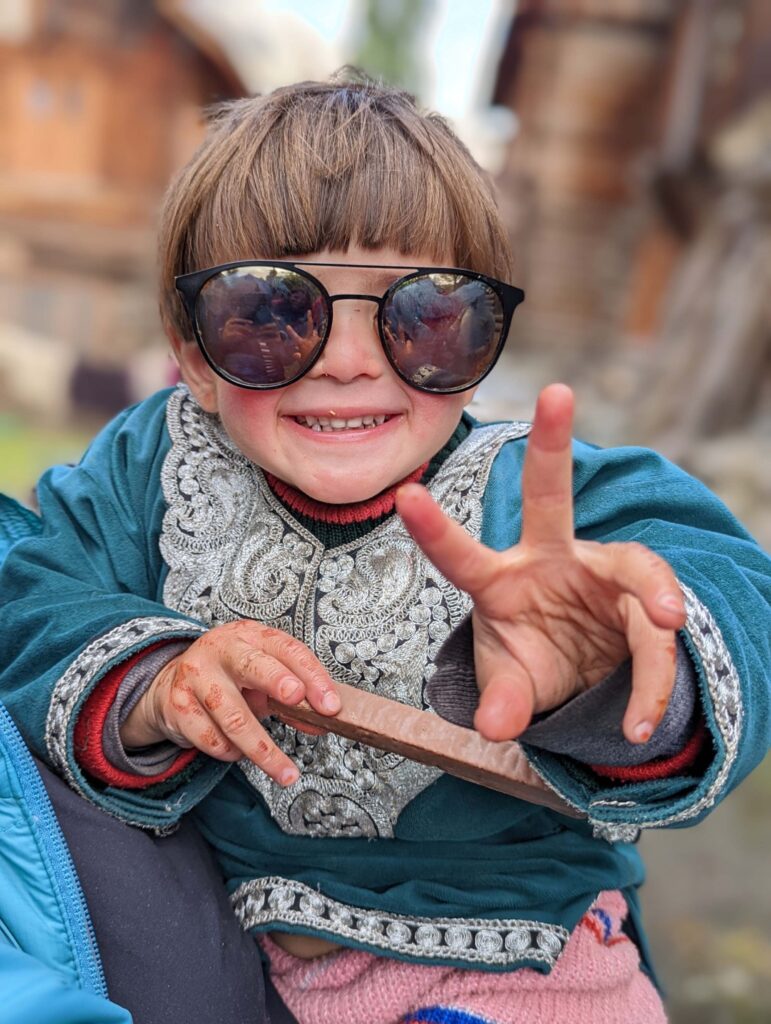
While their lives are filled with beauty, these children also face unique challenges:
Limited Opportunities: Remote areas often lack basic infrastructure like schools and healthcare facilities.
Weather Extremes: Harsh winters make it difficult to access education and other resources.
Need for Better Facilities: Improved infrastructure and programs tailored for these children can significantly enhance their quality of life.
These children display remarkable strength and resilience, growing up amidst challenges that are unique to their region.
Education Amidst Adversity: Despite disruptions, children strive for education, often walking long distances to reach schools in remote villages.
Hope for Peace: These children are a testament to hope, dreaming of a future where peace and progress prevail in their homeland.
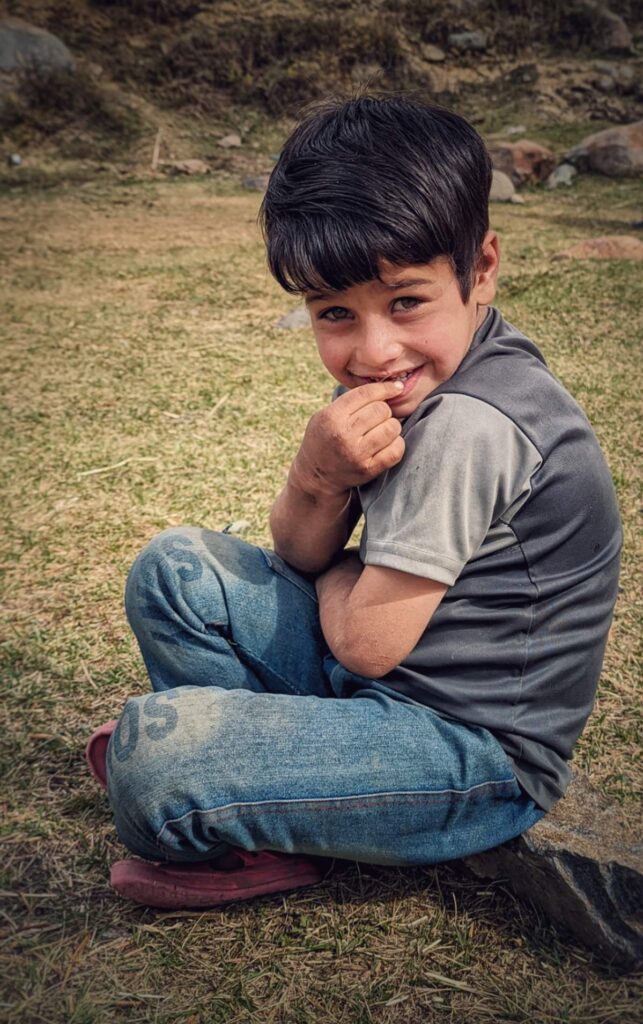
Despite challenges, the children of the Valley dream big, aspiring to contribute to their community and country.
Many children excel in sports like cricket, football, and skiing, with athletes from this region gaining national and international recognition.
The valley’s festivals are a source of immense joy for the children here. Festivals are time for new clothes, delicious meals, and community prayers.
Children of this region grow up immersed in a culture that celebrates art, music, and traditions. Many children learn traditional crafts such as carpet weaving and embroidery from a young age, preserving their rich heritage.
These children try to find joy in simple things like fishing in the Jhelum River or playing cricket in the meadows, bring alive the charm of childhood in this heavenly place.
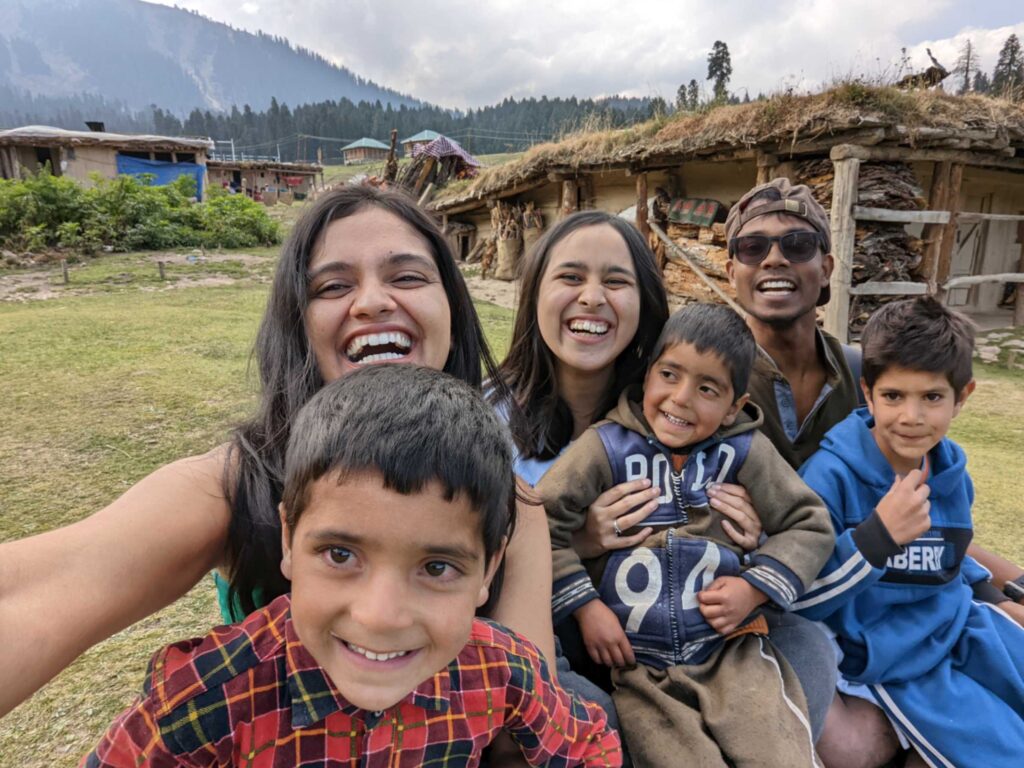
These children with their radiant smiles and unyielding spirit, embody the heart and soul of this beautiful land. They are the guardians of its traditions, the stewards of its natural beauty & peace. Seeing the world through their eyes offers a glimpse of hope, resilience, and boundless potential for a brighter future in the Valley of Paradise.
Lakes in Kashmir
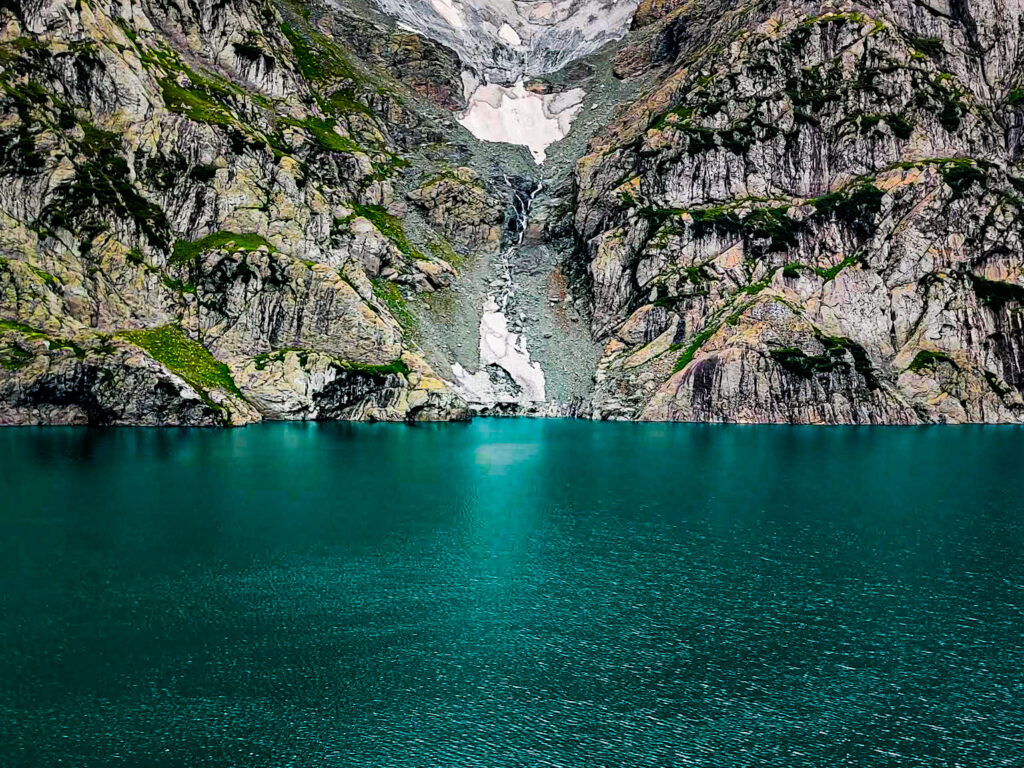
Kashmir is home to some of the most stunning lakes in the world. These lakes, with their crystal-clear waters and picturesque surroundings, add to the valley’s charm and serenity. They hold cultural, historical, and spiritual significance.
One of the most iconic lakes of Valley, Dal Lake is a symbol of the valley’s beauty. It is known for its houseboats and colorful shikaras (traditional wooden boats). It is also famous for floating gardens, lotus blooms, and floating markets.
Beyond Dal lake, there is Manasbal lake & Wular lake. Wular Lake, located in the Bandipora district, is one of the largest freshwater lakes in Asia and an ecological treasure.
However, if you dare to move out from the charm of the Dal lake & move into a completely magical world, Alpines lake are just ready to prove you their heavenly status.
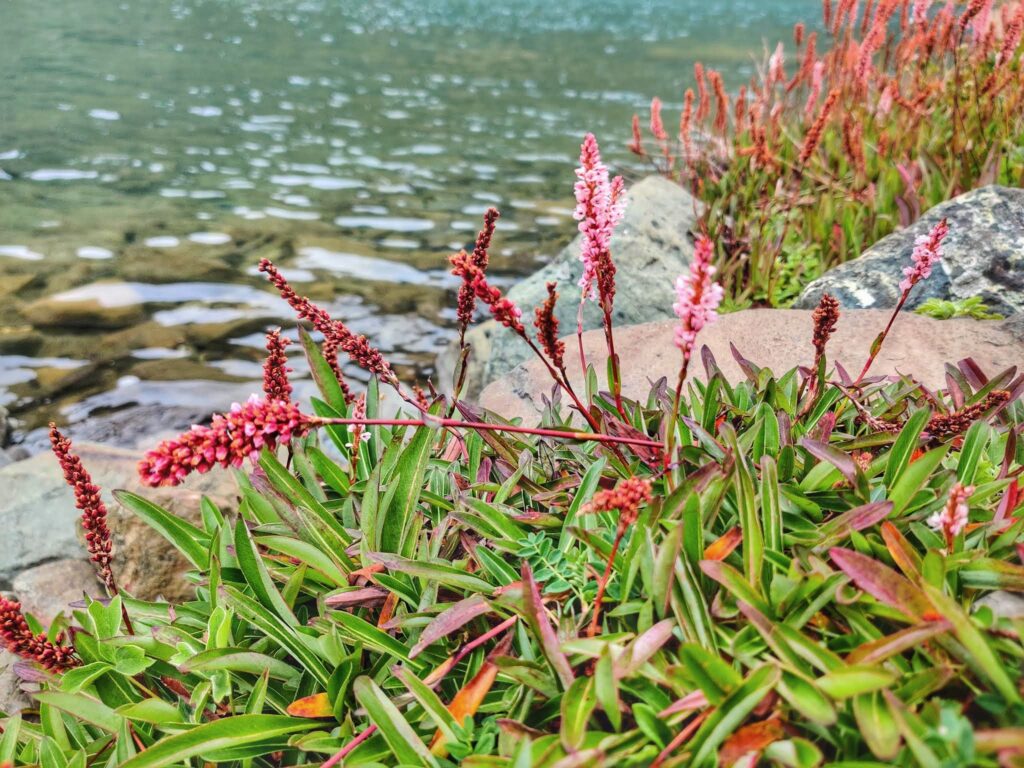
Crystal clear Alpine lakes are not just found in Europe. There are right here in India! Just the difference is that these lakes are easily accessible in Europe by cable cars. However, if you are willing to trek you can find numerous hidden alpine lakes in this paradise. The famous KGL trek & Tarsar Marsar trek takes you to these hidden lakes.
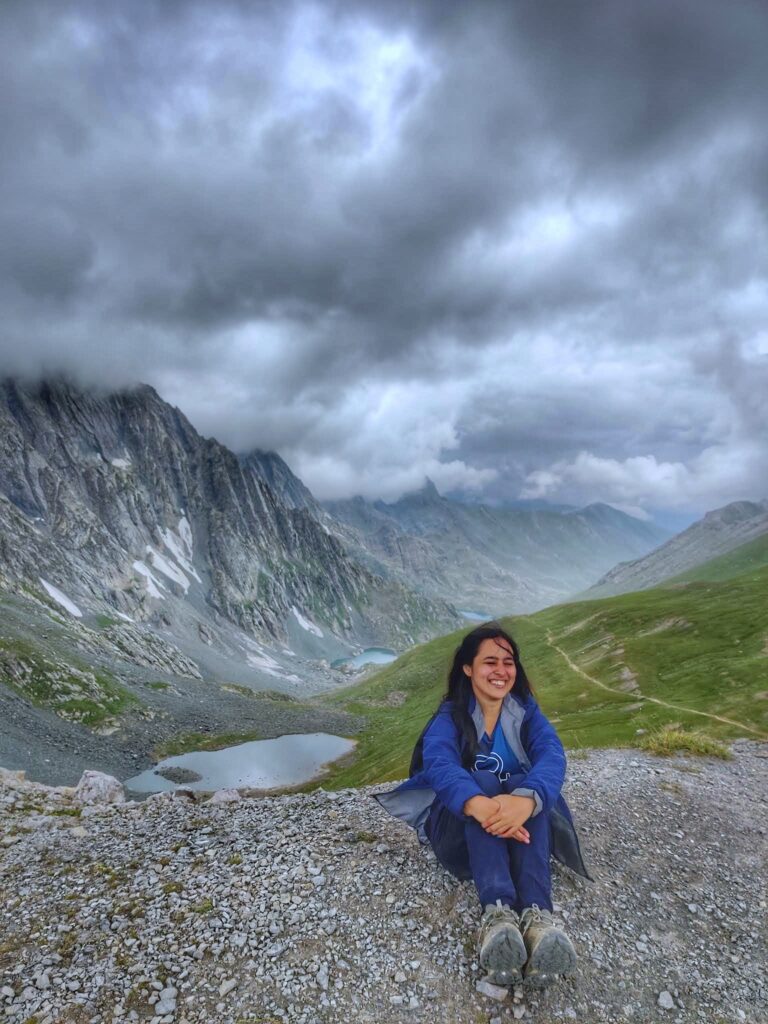
These lakes are the lifeblood of the valley’s culture, economy, and natural beauty. Visiting these lakes is not just an exploration of nature but a journey into the soul of Himalayas itself.
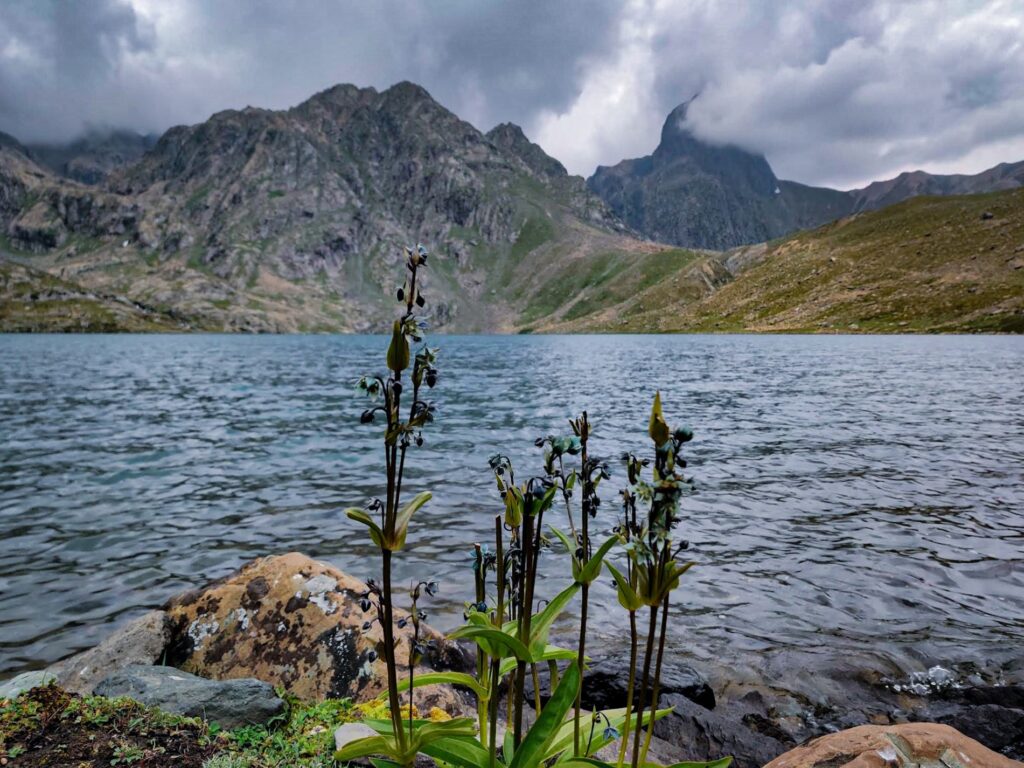
Rivers in Kashmir
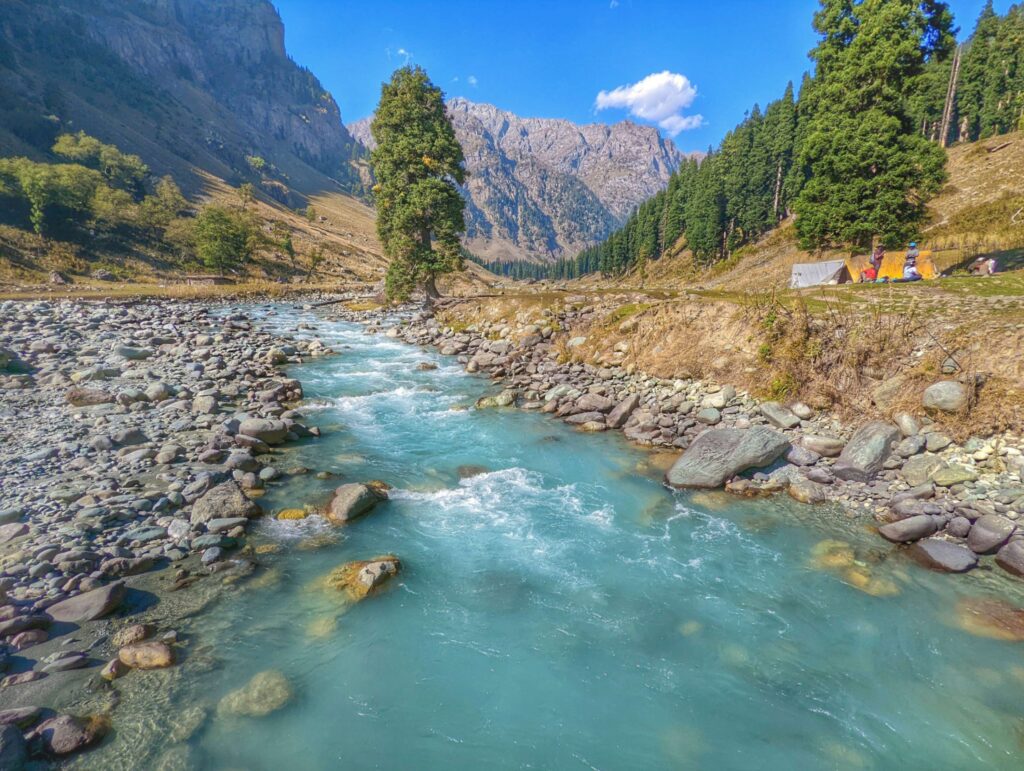
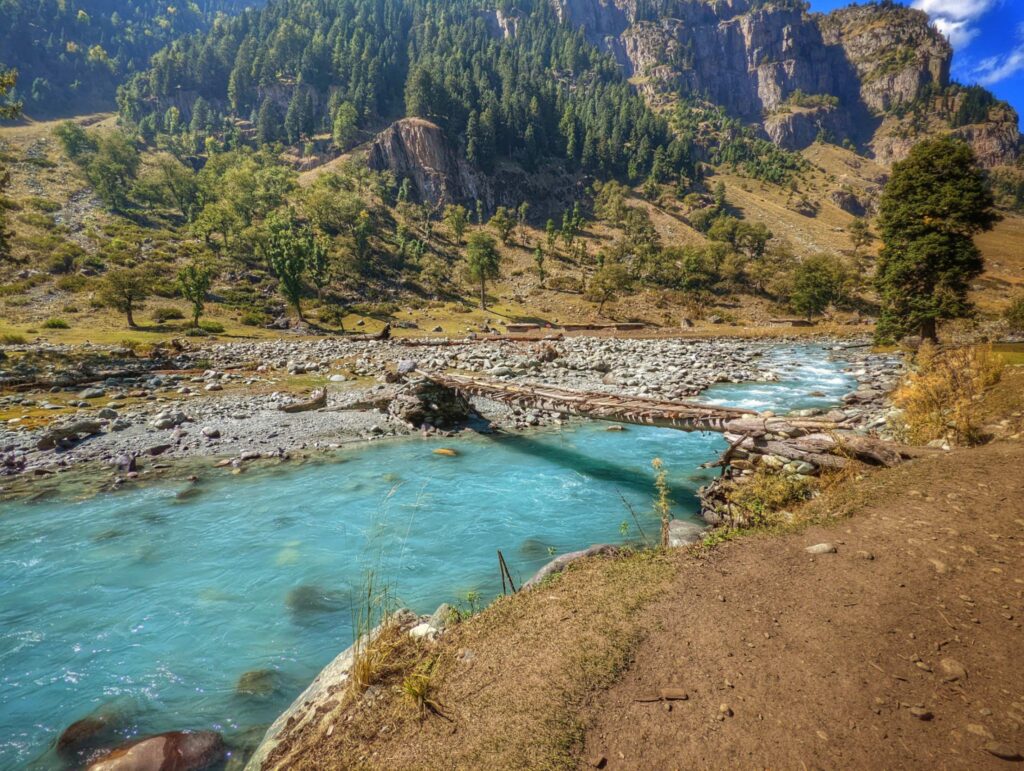
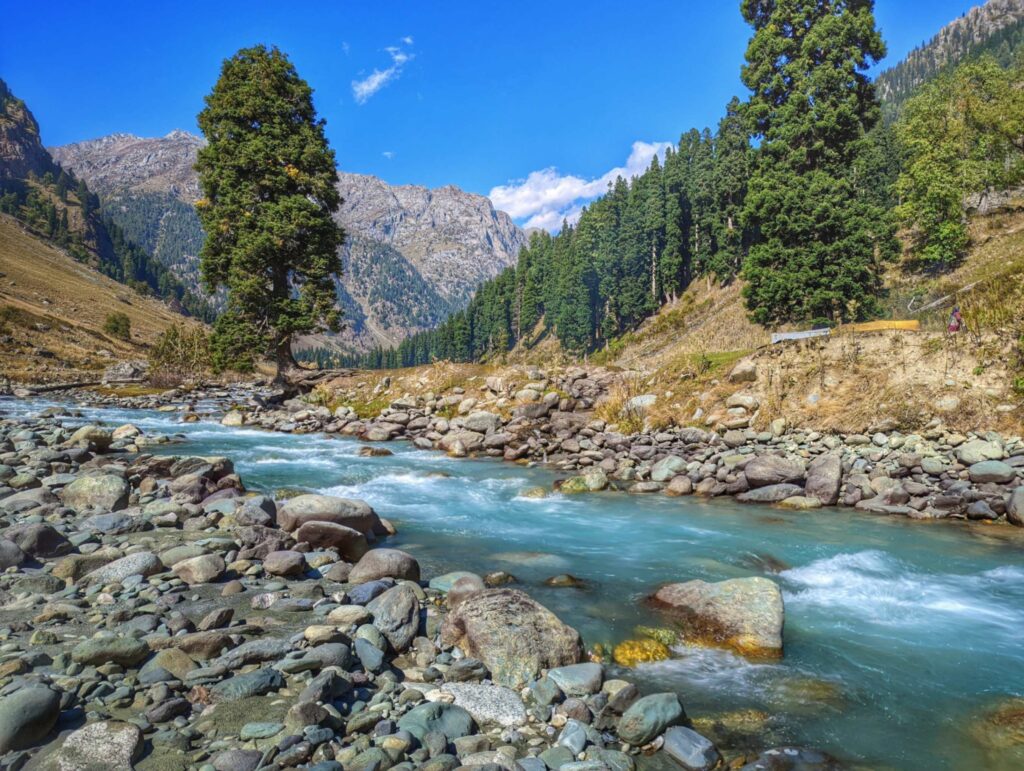
Just see this pictures & marvel at the Lidder River from the Aru valley.
After Lidder, here comes the beautiful Kishanganga from Tulail valley to amaze you.
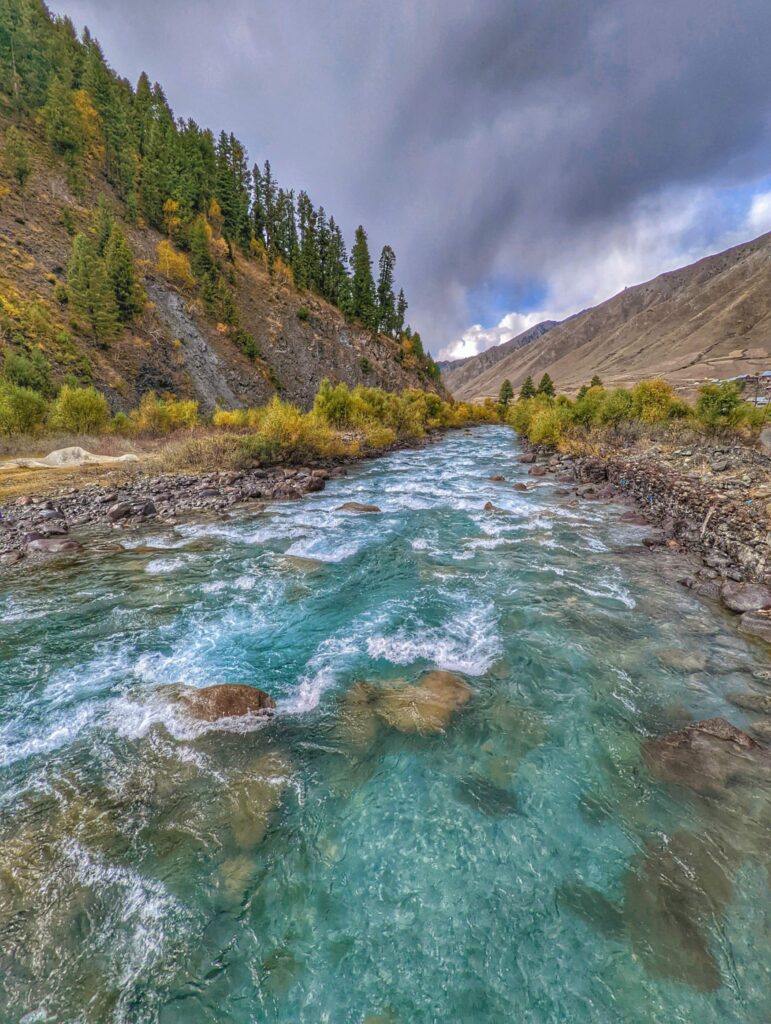
There is a beautiful place here called ” Doodhpatri”. The name “Doodhpatri” means Valley of Milk. This whole place is named due to the milky white waters of Shaliganga River.
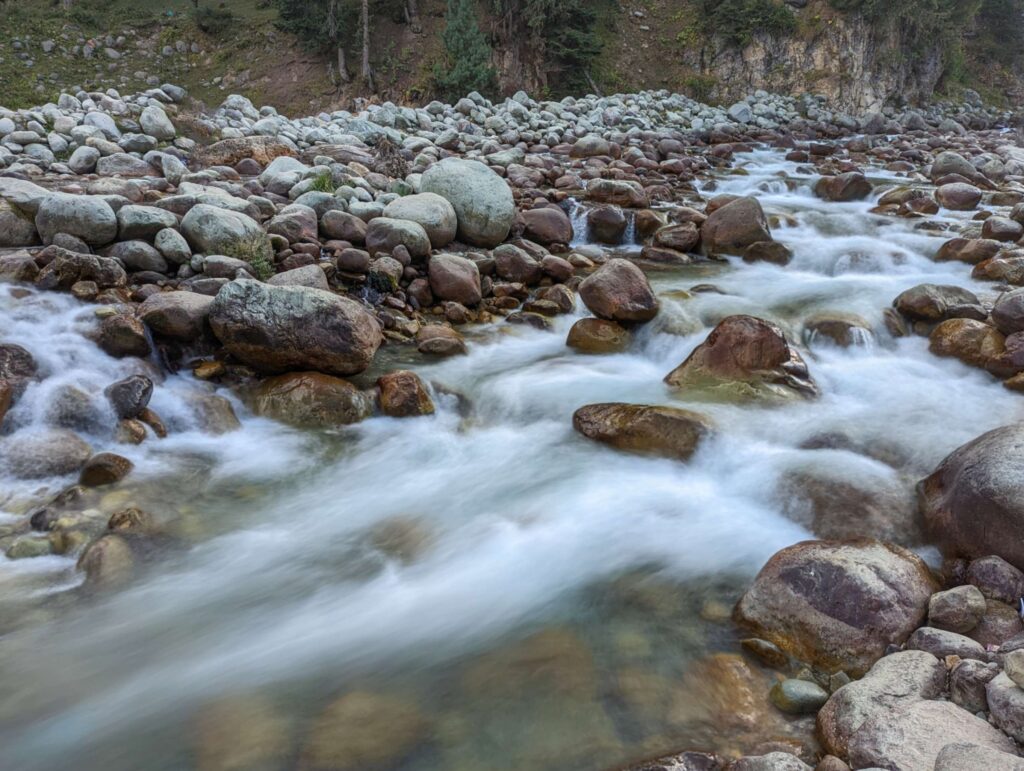
This paradise is indeed blessed with a network of majestic rivers that flow through its picturesque valleys and snow-capped mountains. These rivers hold immense cultural, historical, and spiritual significance. Their serene beauty and life-giving waters make them an integral part of Kashmir’s identity. Exploring these rivers offers a glimpse into the heart of this region, where nature’s bounty and human life flow in perfect harmony.
Food in Kashmir
Kashmiri cuisine is a true reflection of the valley’s beauty and warmth. From the royal Wazwan feasts to the comforting local dishes, every bite tells a story of tradition and hospitality.
The cuisine here is a rich tapestry of flavors, influenced by the region’s diverse cultural heritage and natural abundance.
This cuisine is renowned for its delectable non-vegetarian dishes.
Signature Dishes:
Wazwan, a multi-course meal ,is the crown king 👑 of cuisine. It is traditionally prepared for special occasions like weddings and festivals. It requires utmost meticulous preparation.
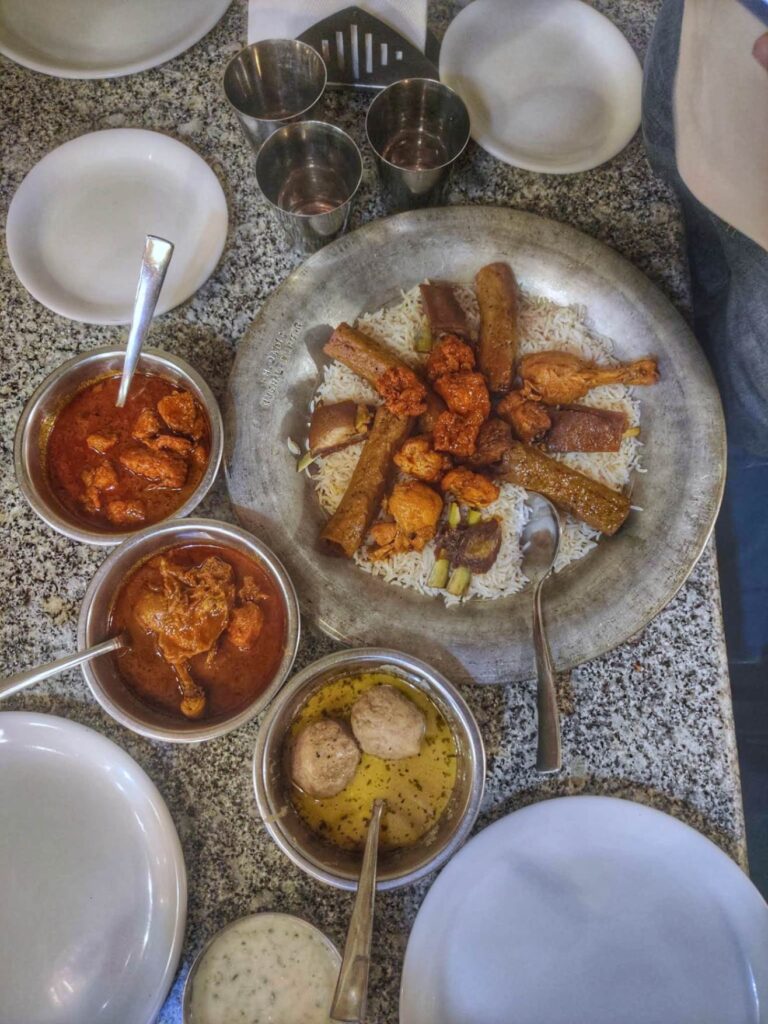
Rogan Josh: A flavorful lamb curry cooked with Kashmiri red chili and yogurt
Yakhni: A delicate lamb curry made with yogurt and aromatic spices.
Goshtaba: Minced lamb meatballs in a creamy yogurt gravy, often served as the finale of the meal.
Kashmiri Seekh Kebab: Spiced minced meat skewers, grilled to perfection.
If you observe food closely here, you can notice that Saffron is the ultimate hero of this region’s cuisine.
Saffron, grown in the fields of Pampore, is an essential ingredient in many dishes, from Kahwa to biryanis and desserts. Its unique flavor and aroma elevate Kashmiri cuisine to a royal level.
Food here, also has the influence of Kashmiri Pandit Cuisine.
Nadru (Lotus Stem) Delicacies:
Another thing which I found different about the this cuisine were it’s Nadru Delicacies.
The Nadru, or lotus stem, is a star ingredient.
Nadru Yakhni: Lotus stems cooked in a yogurt-based curry with aromatic spices.
Nadru Monje: Deep-fried lotus stem fritters, a popular snack here.
And then there is the lovely Kashmiri Pulao! It is a fragrant rice dish made with saffron, dry fruits, and nuts.
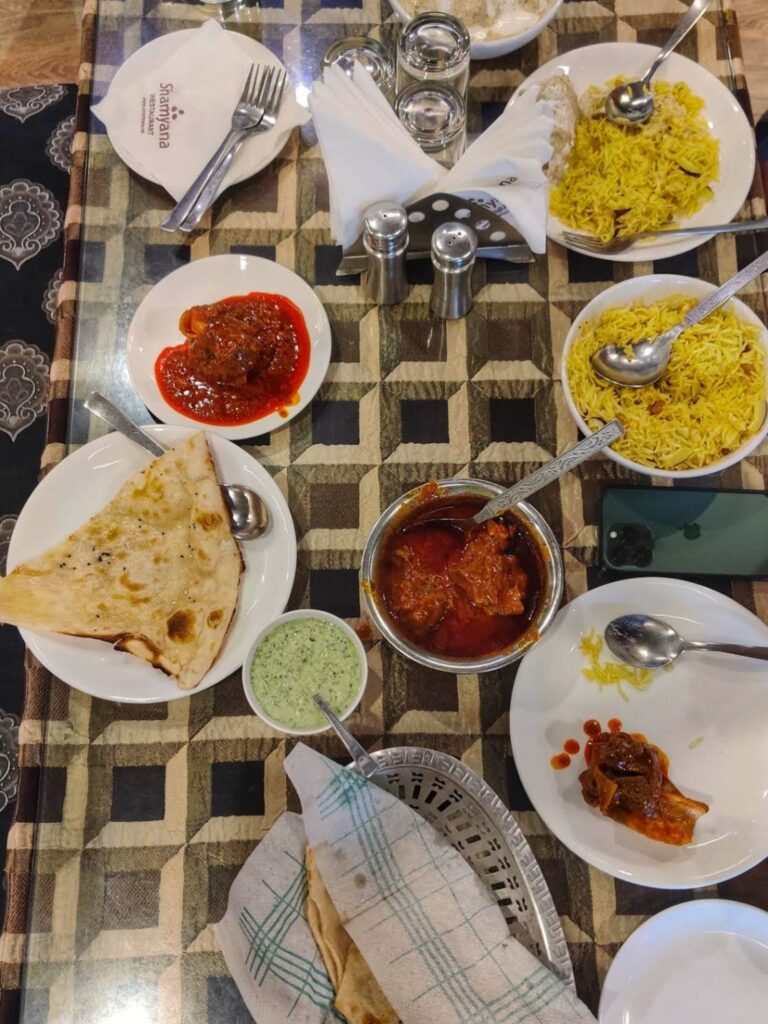
Besides food, there is world famous Kahwa. It has literally become a hallmark of Kashmiri hospitality.
The food here is a celebration of flavors, traditions, and hospitality. With its unique dishes, fragrant spices, and warm culture, cuisine here offers an unforgettable experience that reflects the valley’s natural beauty and rich heritage. Whether it’s the royal Wazwan or a simple cup of Kahwa, every bite is a taste of paradise.
Art in Kashmir
From intricate embroidery to vibrant papier-mâché, every piece of Kashmiri art carries the soul of its people and their traditions
This place is a treasure of artistic heritage. The art of this region reflects its rich history, cultural diversity, and unparalleled craftsmanship.
Pashmina shawls are among the most exquisite and sought-after handwoven textiles in the world. These are made from the wool of the Changthangi goat, found in the high-altitude regions of Ladakh.
Weaving a single Pashmina shawl can take weeks or even months, as the process is entirely done by hand. Valued for their softness, warmth, and elegance, Pashmina shawls are considered a symbol of luxury.
Kashmiri carpets, known for their intricate designs and superior quality, are a testament to the region’s artistic excellence. They are hand-knotted using pure wool or silk. Designs often include floral patterns, geometric shapes, and Persian-inspired motifs.

Papier-mâché, a traditional craft, transforms simple paper into vibrant and decorative items. Made by soaking paper, blending it into a pulp, and molding it into desired shapes. Items are then hand-painted with colorful floral and geometric designs.
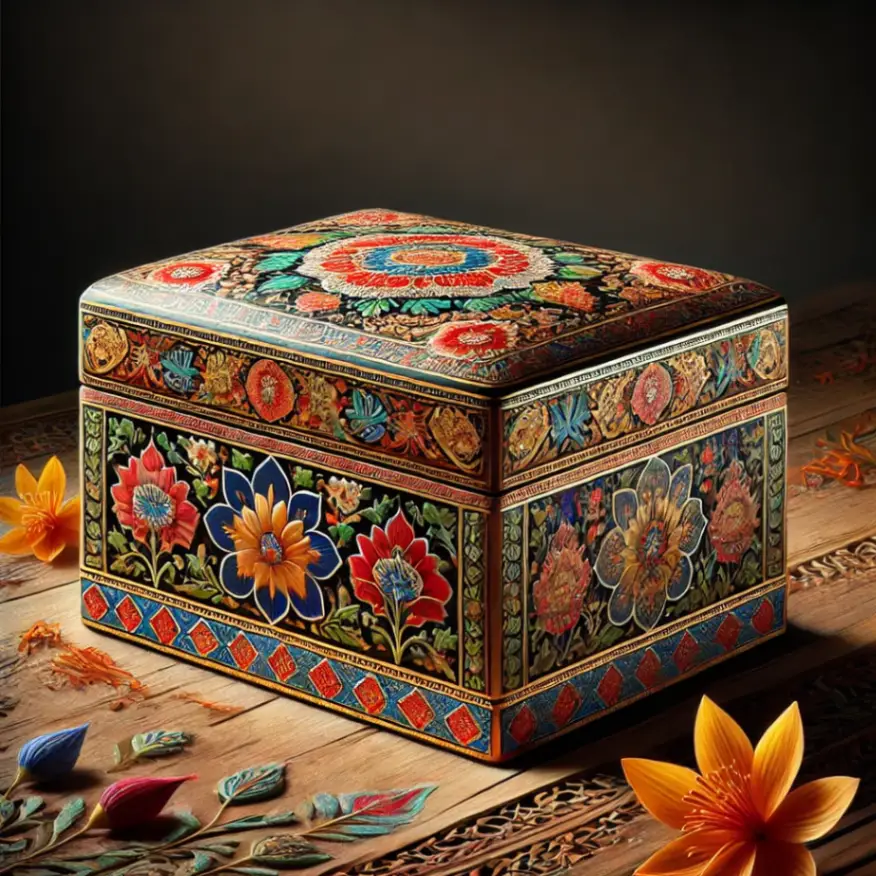
This paradise is renowned for its exquisite walnut wood carving, a craft that showcases the region’s unparalleled skill. Intricate carvings of flowers, chinar leaves, and other traditional motifs are done on walnut wood known for its rich grain and durability. Furniture, boxes, wall panels, and decorative items are made by walnut wood.
Sozni embroidery (Also known as Sozan Kaari) is a delicate art form that enhances the beauty of Kashmiri textiles. Delicate patterns inspired by nature are hand-embroidered with fine needles and threads representing the patience and precision of Kashmiri artisans.
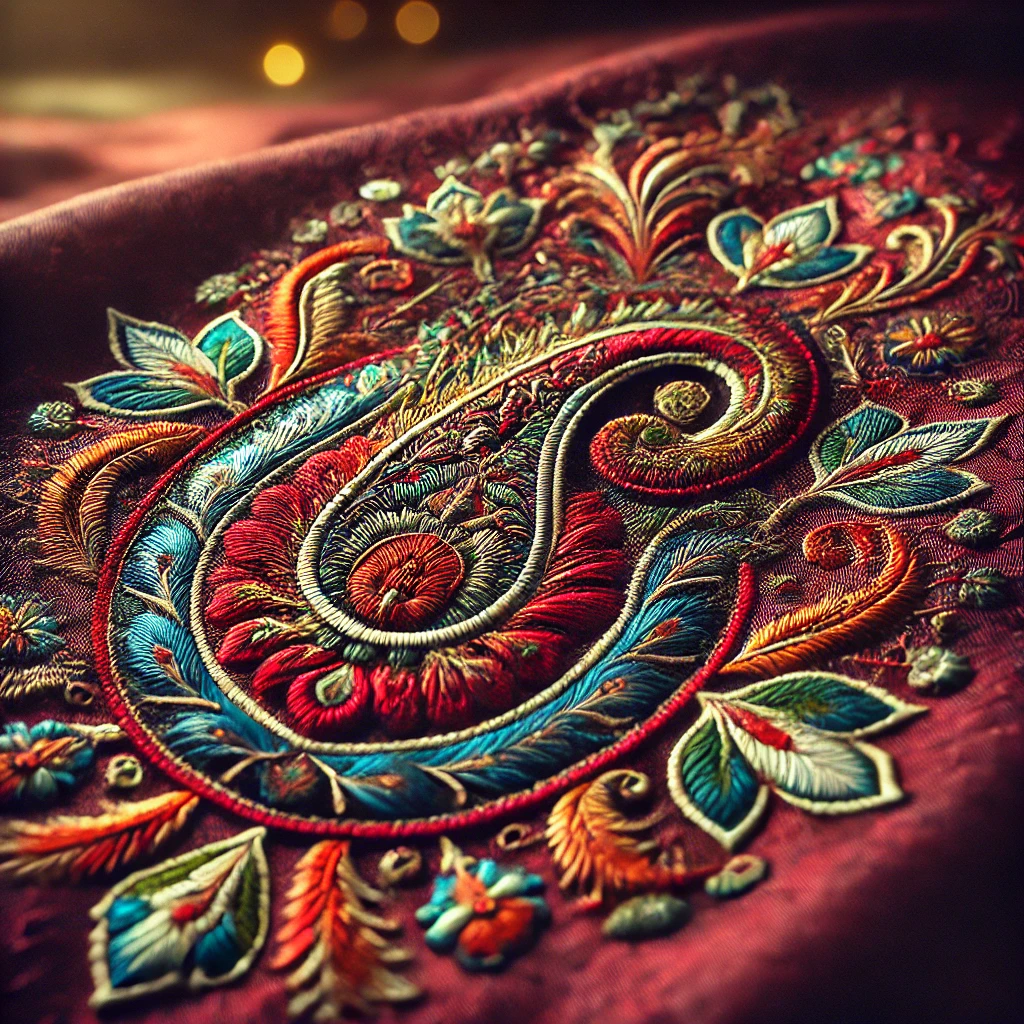
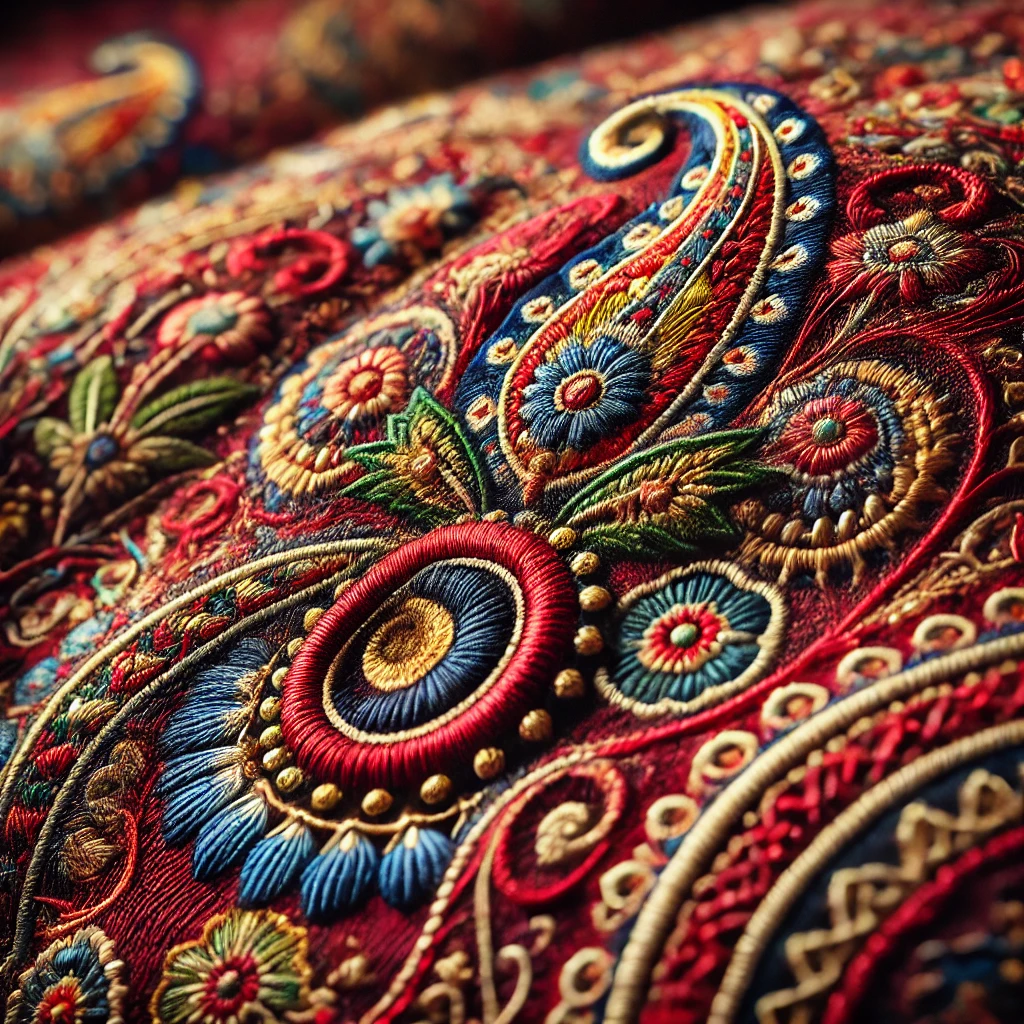


The artistry of crafting traditional musical instruments, like the Santoor and Rabab, is another highlight of Kashmiri art.
Santoor is a stringed instrument made of walnut wood, often associated with Sufi music. If you want to immerse into the magical world of Santoor, just hear albums by the legendary Pandit Shivkumar Sharma.
The art of here is a living testament to its history, culture, and the unparalleled skill of its artisans & reflects the influence of Persian, Central Asian, and Indian traditions.
From the intricate weave of a Pashmina shawl to the vibrant strokes of papier-mâché, every piece of Kashmiri art carries the essence of the valley.
Kashmir: A Journey That Stays with You Forever
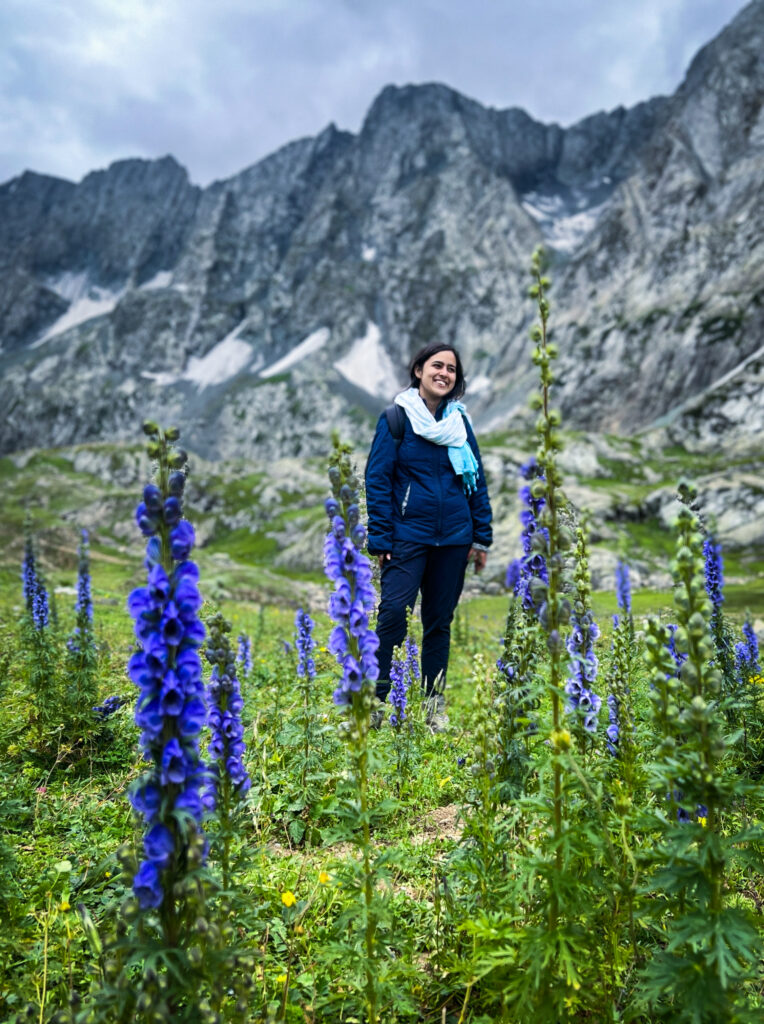
For me, Kashmir is more than just a land of stunning beauty. It’s a feeling that will forever stay in my heart.
But offcourse to see the real Kashmir, you must need to go beyond commercialized places. Otherwise you will be stuck in taxi driver, pony riders scams.
As I reflect on my journey, I realized it’s not just the snow-clad mountains, the tranquil Dal Lake, or the vibrant saffron fields that make Kashmir so special. It’s the warmth of its people, the rich cultural tapestry, and the profound sense of peace that it evokes.
Through my eyes, Kashmir is a place of contrasts—serenity and resilience, ancient traditions and modern aspirations. It has reminded me of the power of nature to heal, inspire, and connect us to something greater.
Kashmir has left me with a renewed sense of wonder and gratitude. Its beauty goes beyond what the eyes can see; it touches the heart and soul.
As I conclude this blog, I am filled with a hope that this paradise will always remain as captivating and timeless as it has been through the ages.Kashmir is not just a destination—it’s a dream I’ll carry with me forever.
FAQs
How to Avoid Tourist Traps and Overcrowded Spots on Your Kashmir Trip
1. What are the common tourist traps in Kashmir?
Avoid overpriced activities like unregulated Shikara rides or pony rides, as they can often charge exorbitant prices & such pony rides are often bad for animals. Best way to explore valley is on foot. Similarly, many roadside shops may overcharge for handicrafts or saffron if you don’t negotiate or verify authenticity.
2. How can I avoid overcrowded places in Kashmir?
To avoid the crowds, visit popular spots like Gulmarg, Pahalgam, and Dal Lake early in the morning or during off-peak seasons (spring and autumn). Opt for lesser-known destinations like Yusmarg, Doodhpathri, or Gurez Valley for a quieter experience.
3. Should I book guided tours or explore independently?
Tour package & guided tours are just not my cup of tea. Many operators may take you to heavily commercialized areas for commissions. Research and plan independently for a more authentic experience, or choose reputable local guides with good reviews.
4. What should I avoid buying as souvenirs in Kashmir?
Avoid purchasing mass-produced items sold as “authentic” Kashmiri handicrafts. Instead, buy from government-certified emporiums or verified local artisans for genuine products like Pashmina shawls, carpets, and saffron.
5. Are there any specific scams to be aware of?
Beware of fake saffron sellers and unlicensed guides offering “exclusive” experiences. Always confirm the authenticity of products and services before committing, and don’t hesitate to compare prices.
6. How can I immerse myself in Kashmir’s culture without falling into tourist traps?
Skip the overly commercialized restaurants and experience local Kashmiri cuisine by dining with local families or visiting lesser-known food joints. Opt for homestays or boutique accommodations to connect with the culture more authentically.
7. What’s the best way to enjoy Dal Lake without the tourist chaos?
Instead of staying on crowded houseboats, book accommodations on quieter parts of the lake, such as Nigeen Lake. Opt for early morning or sunset Shikara rides to experience the lake’s serenity.
8. How can I avoid falling into the trap of overpriced travel packages?
Research and compare multiple travel packages online, or plan your itinerary independently. Booking directly with locals for stays and activities can often save you money while offering a more personalized experience.
9. Should I visit only the famous destinations in Kashmir?
While destinations like Gulmarg and Pahalgam are beautiful, including hidden gems like Bangus Valley, Gurez, or Aru Valley in your itinerary will help you enjoy a more peaceful and unique trip.
10. How can I ensure I respect local culture during my trip?
Avoid wearing revealing clothes, especially in rural or religious areas. Always ask permission before taking photos of locals, and be mindful of cultural practices and traditions. This respect will also help you form genuine connections with the locals.By staying informed and mindful, you can enjoy the true essence of Kashmir while avoiding common tourist pitfalls.


[…] Kashmir Through My Eyes: A Tale of Land of Timeless Beauty […]
[…] Kashmir Through My Eyes: A Tale of Land of Timeless Beauty […]